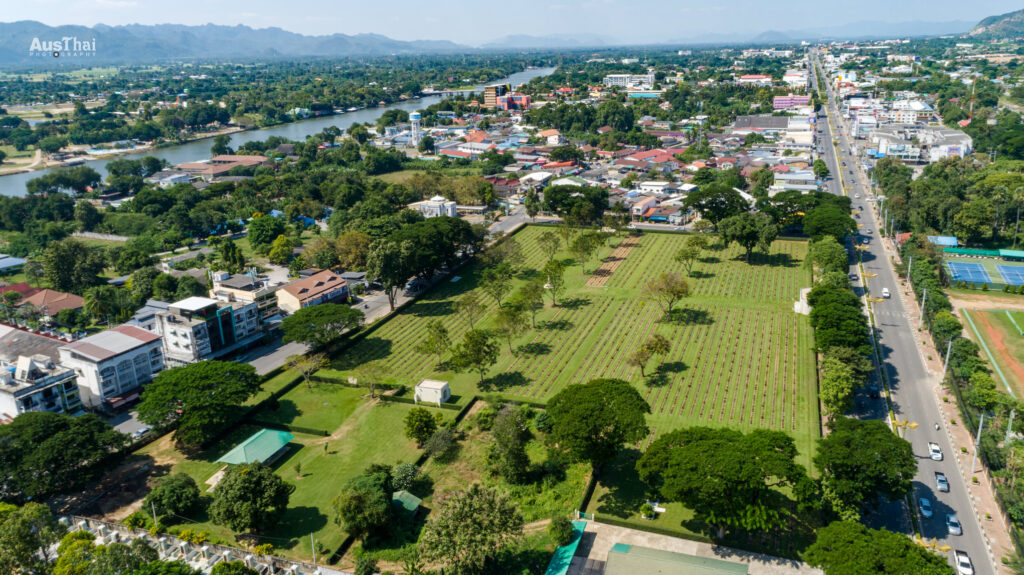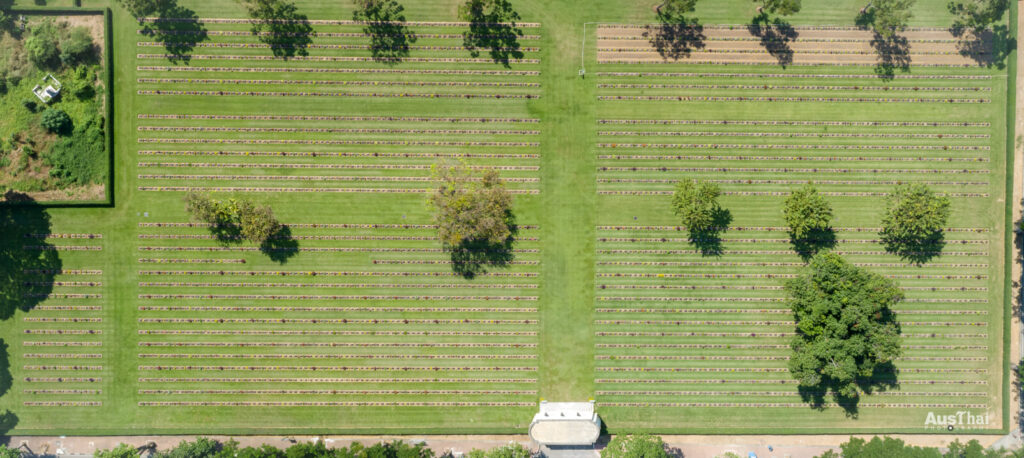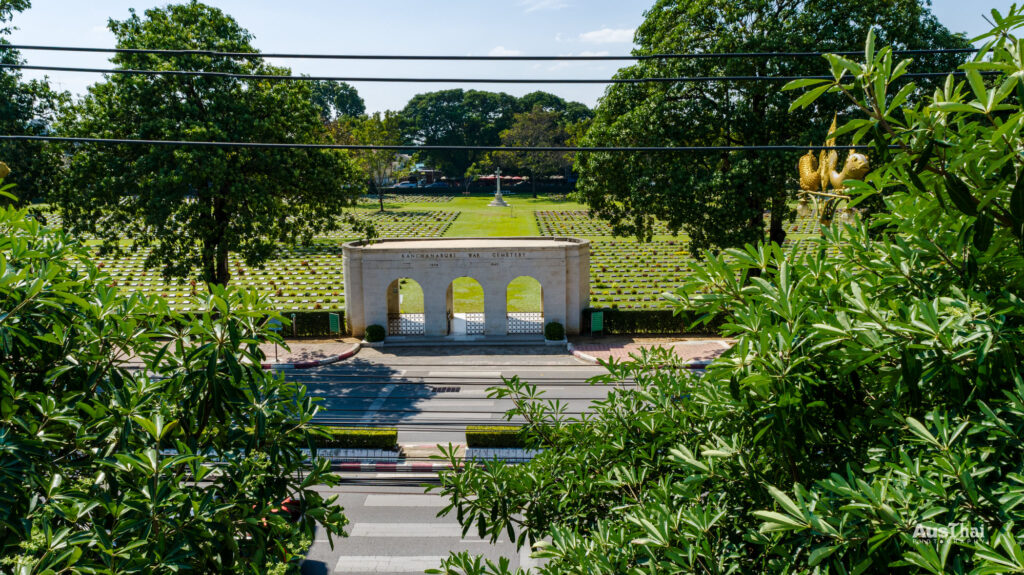There are three Commonwealth War Graves Commission Cemeteries on the TBR. Two are located in Kanchanaburi and the third in Burma.
The main CWGC location (Don Rak) is in downtown Kanchanaburi. A smaller and less well known cemetery lies on the site of the Chung Kai camp which in the latter months of TBR work served as a hospital camp. Many of those buried there died on that site.
The third is located in Thanbyuzayat, Burma (Myanmar). Per the CWGC link below, the other cemeteries they administer are related to the Burma Theater of war and not the TBR.
Again, they tell their own stories:
In terms of historical markers, the Don Rak cemetery has the following to document its provenance.
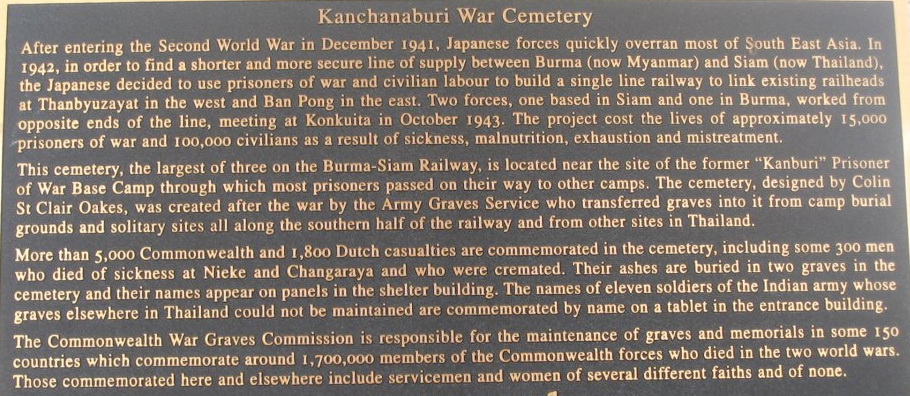
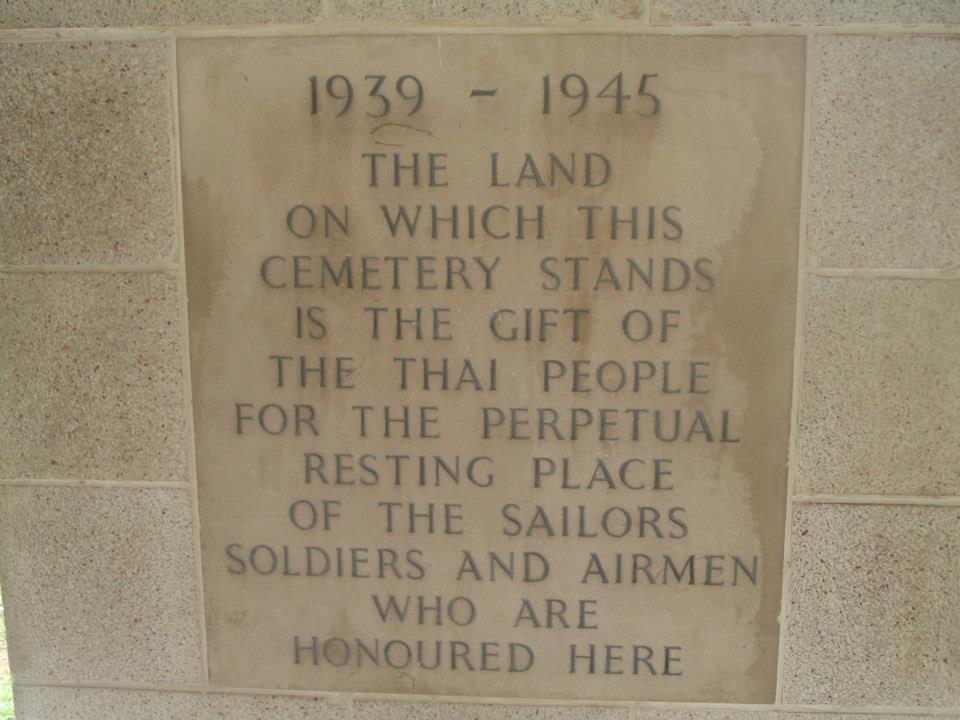
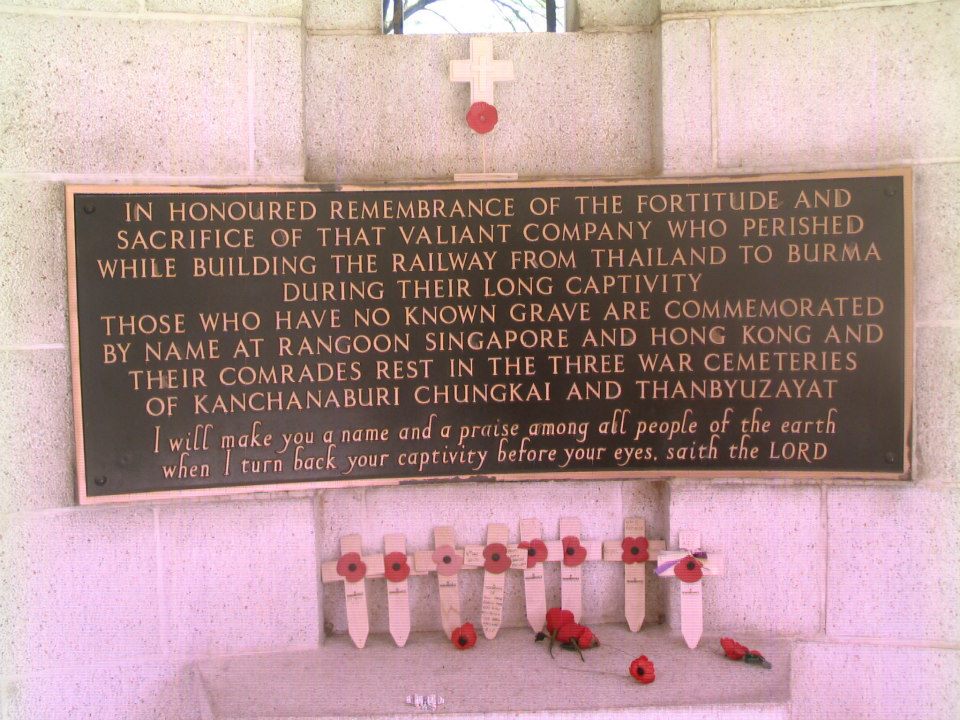
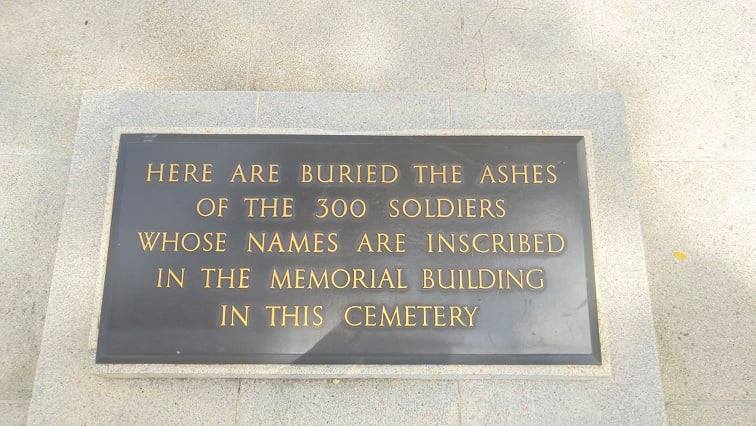
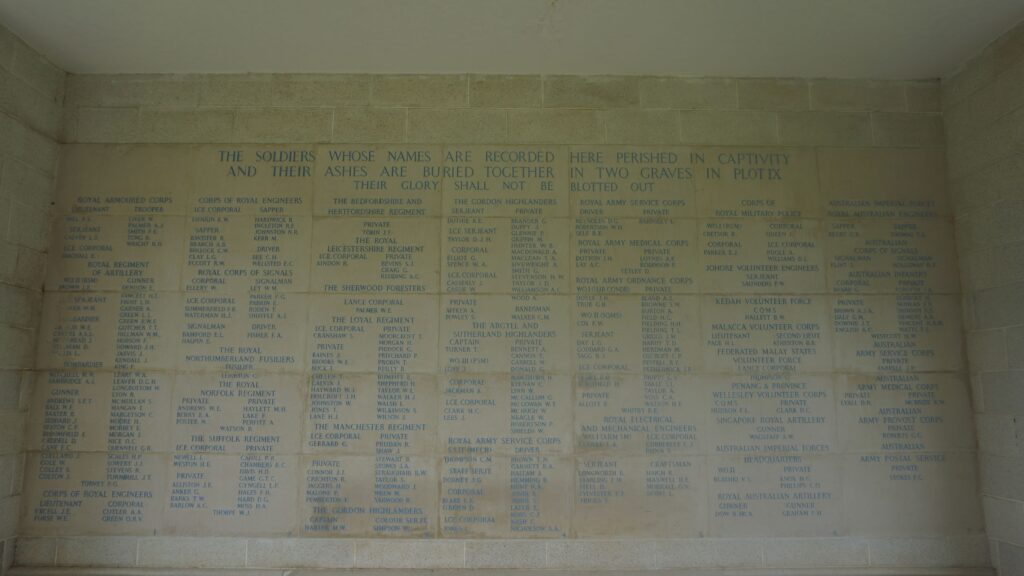
================================
CWGC site manager Mick Newbatt provided some photos tracing the developmental history of the Kanchanaburi and ChungKai Cemeteries. [Jun 2021]
Don Rak:
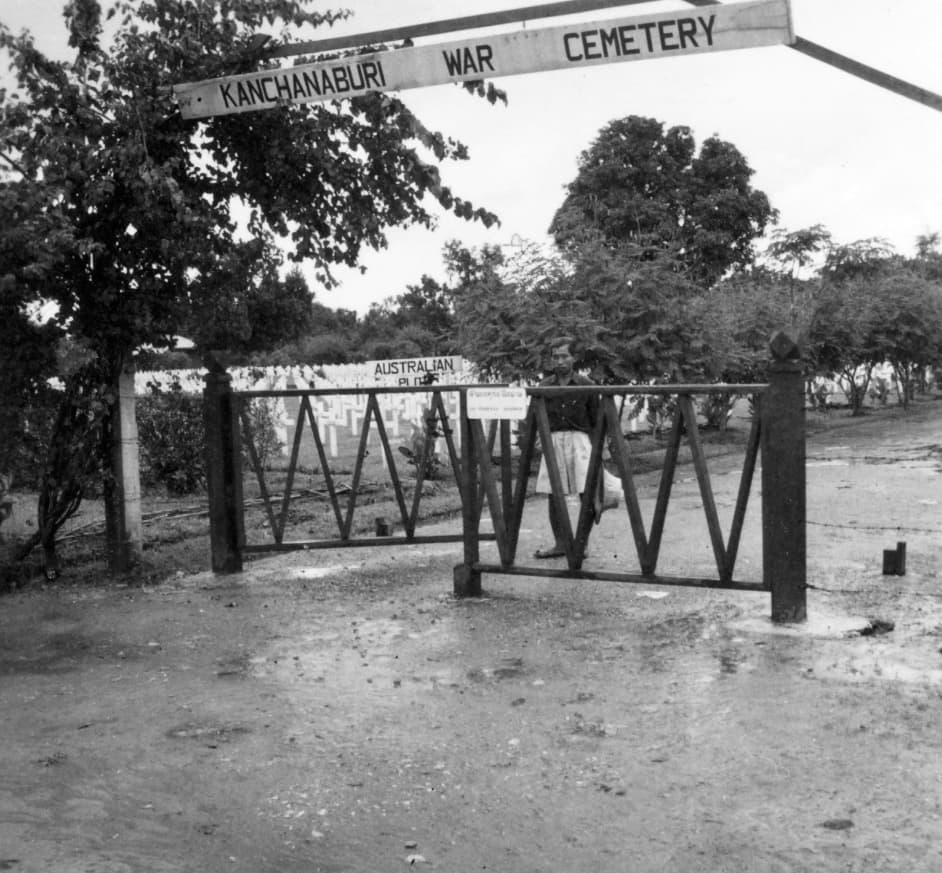

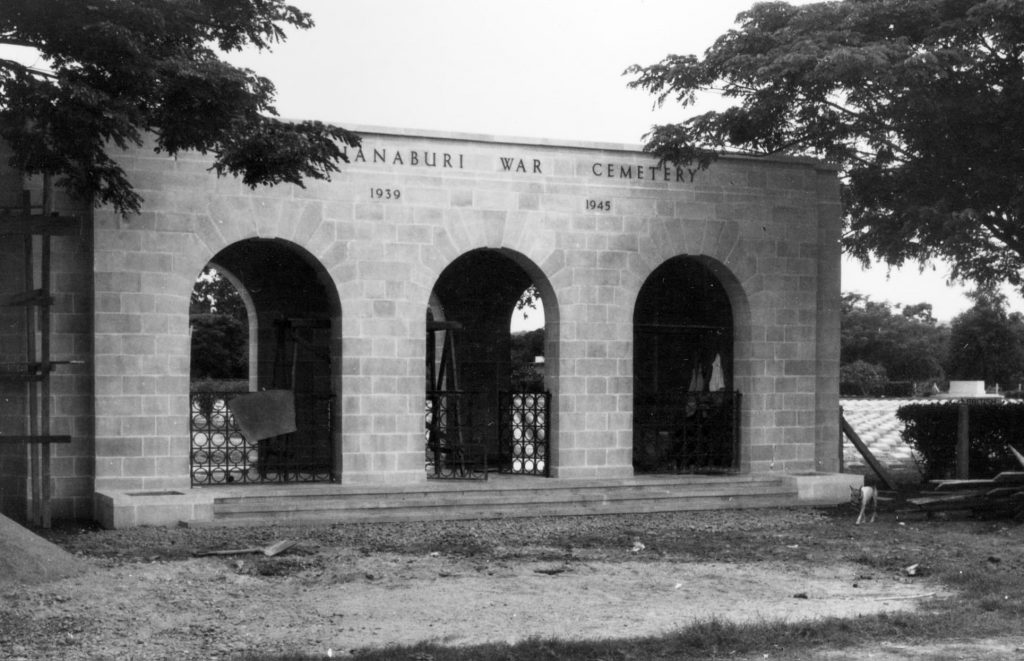
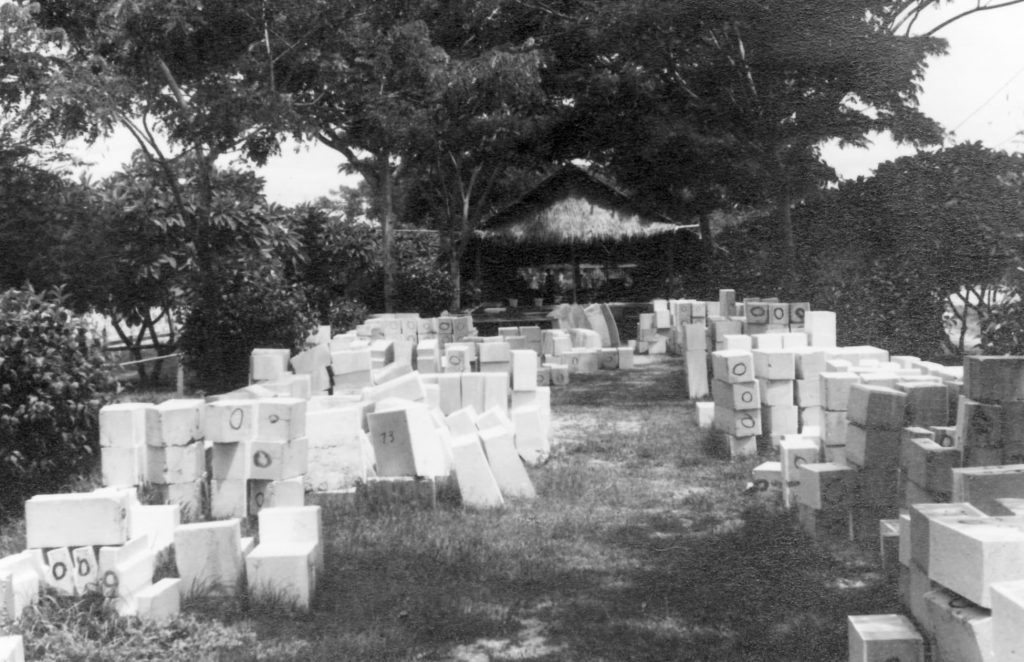
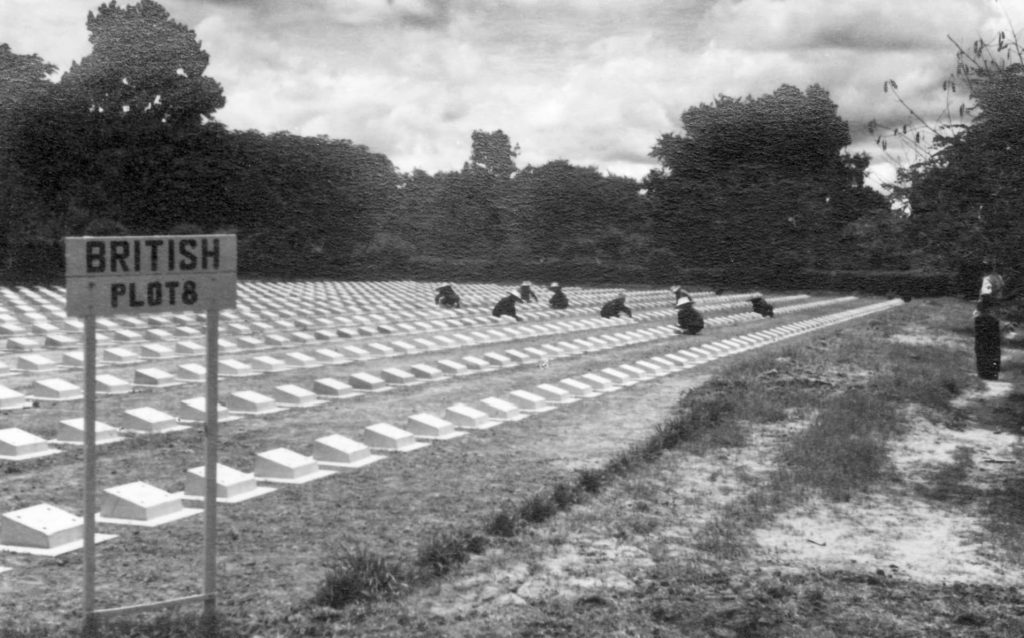
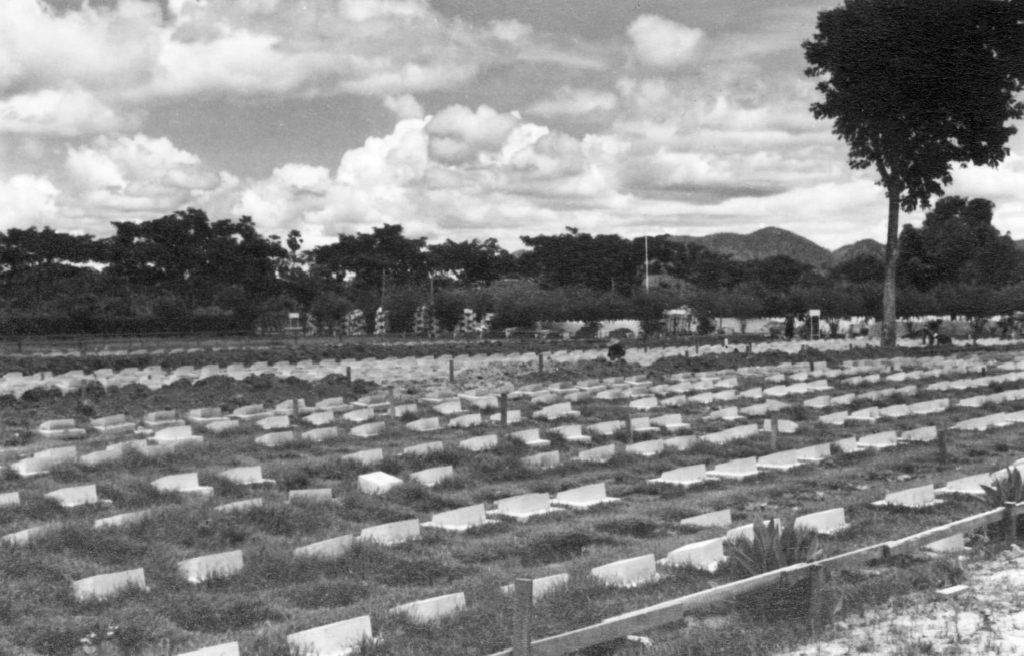
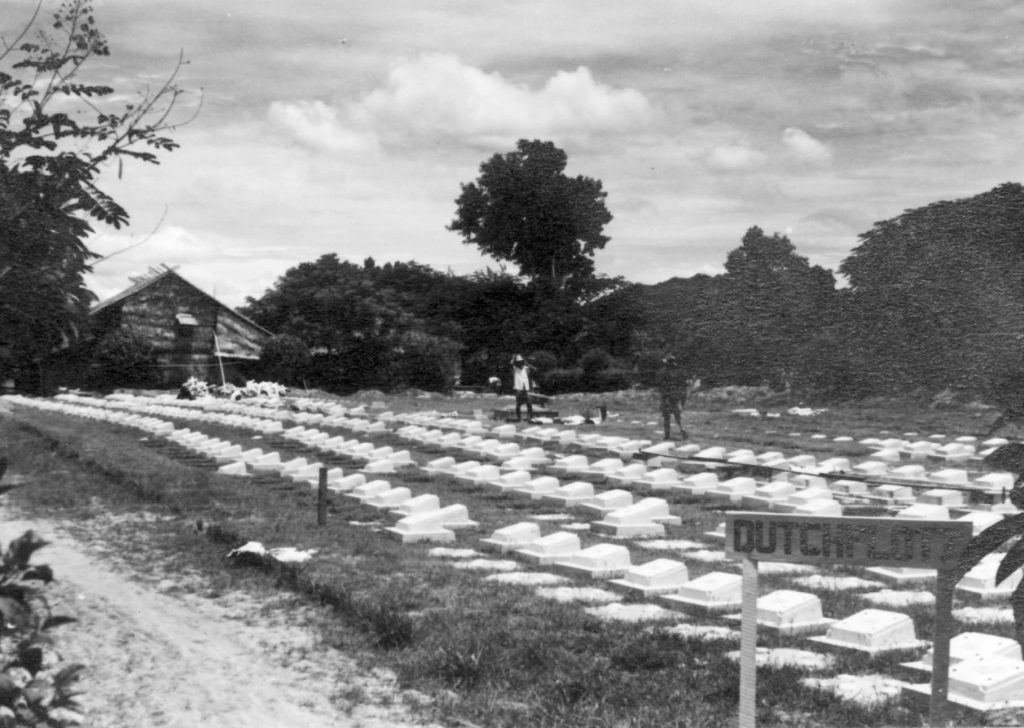
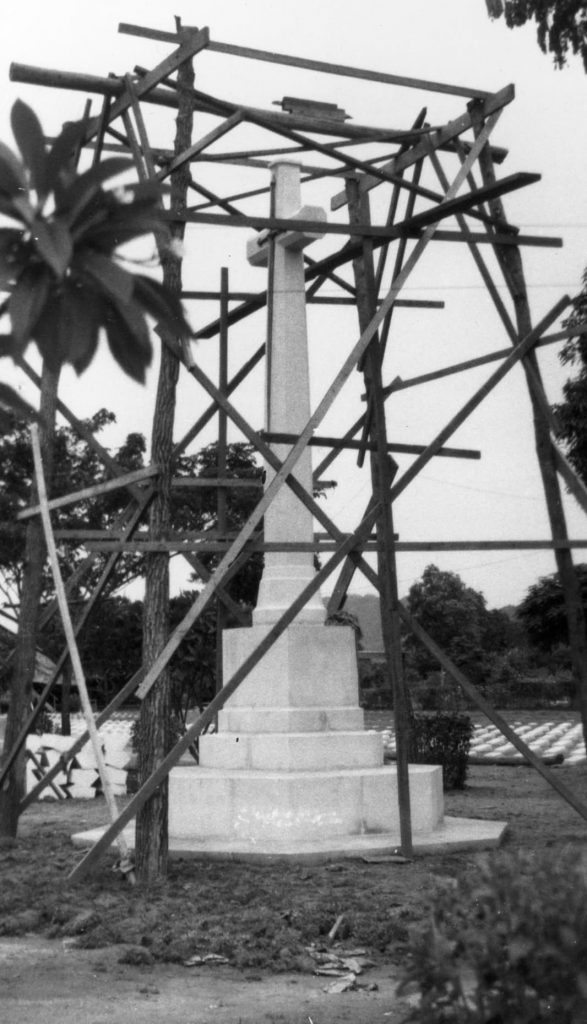
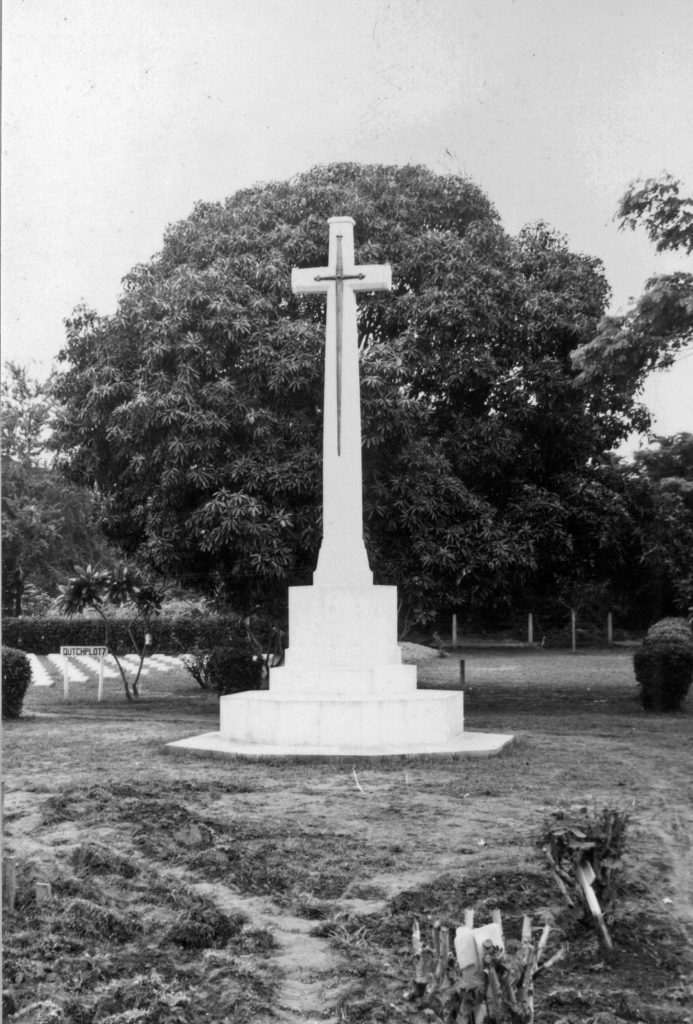
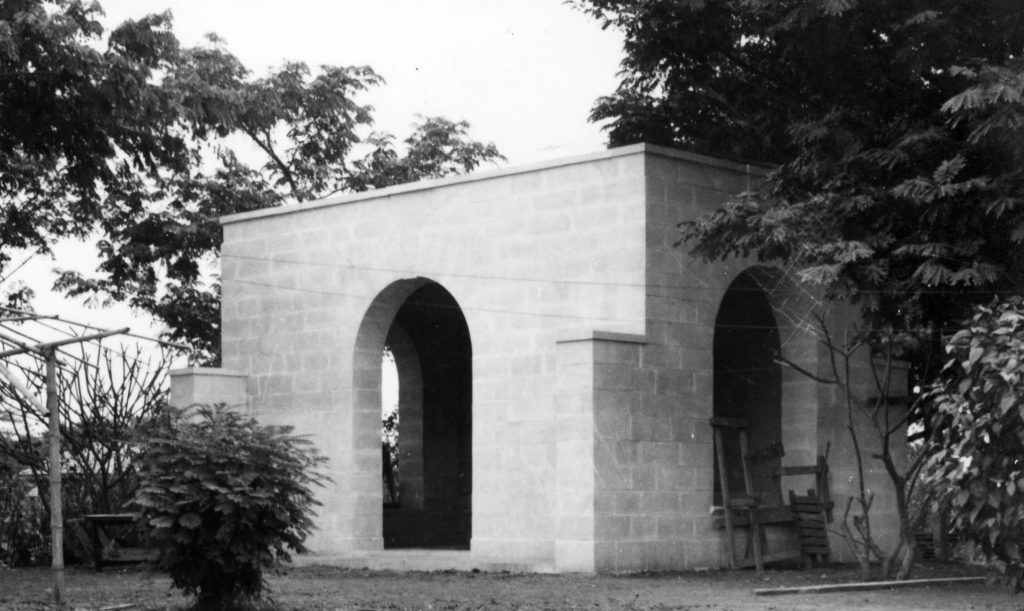
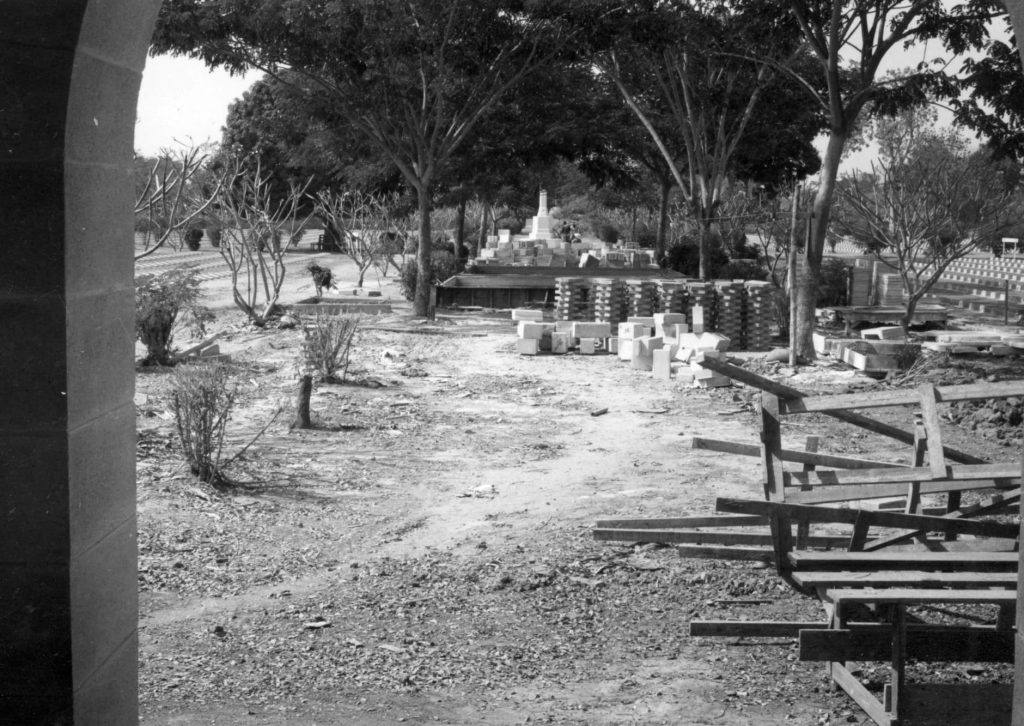
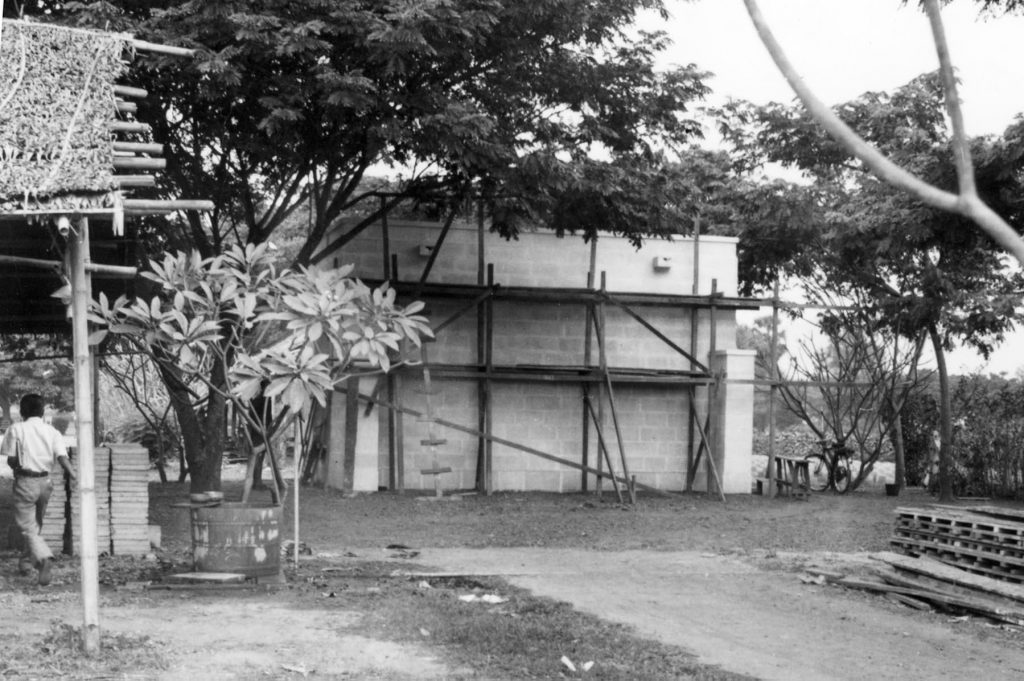
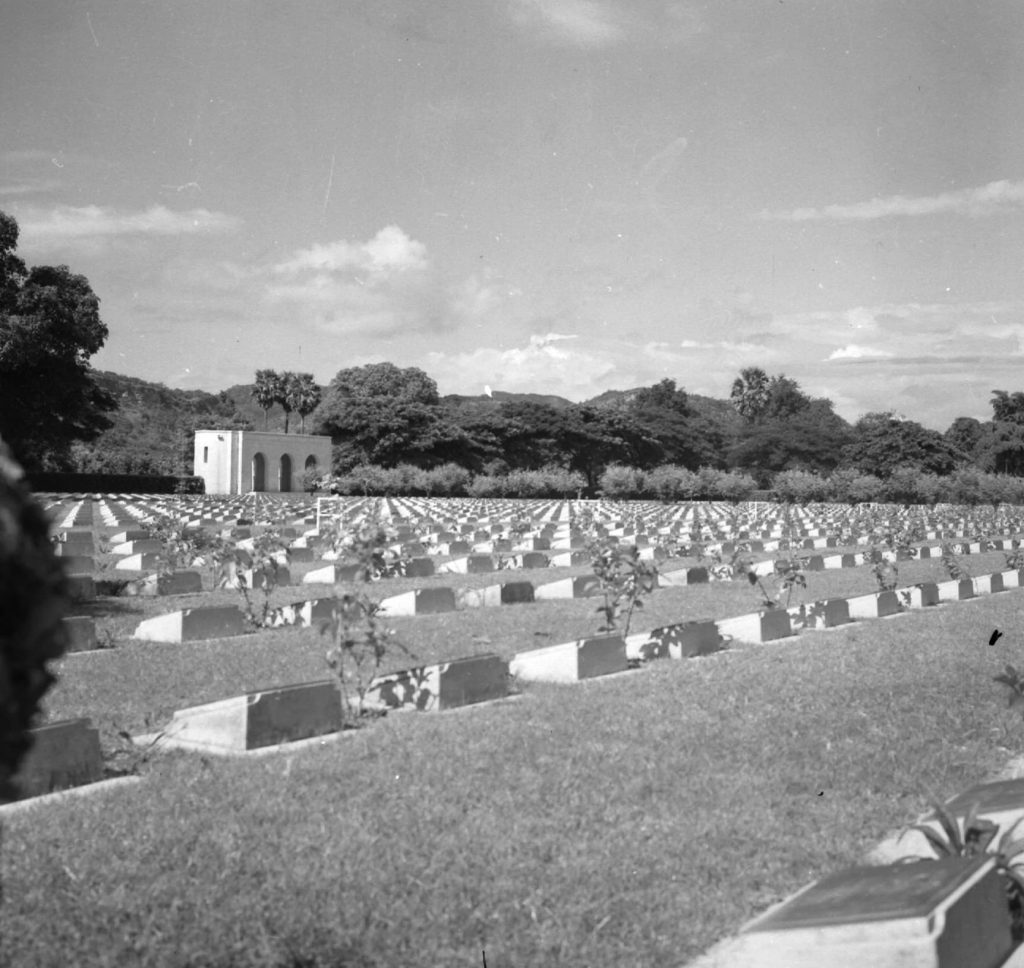
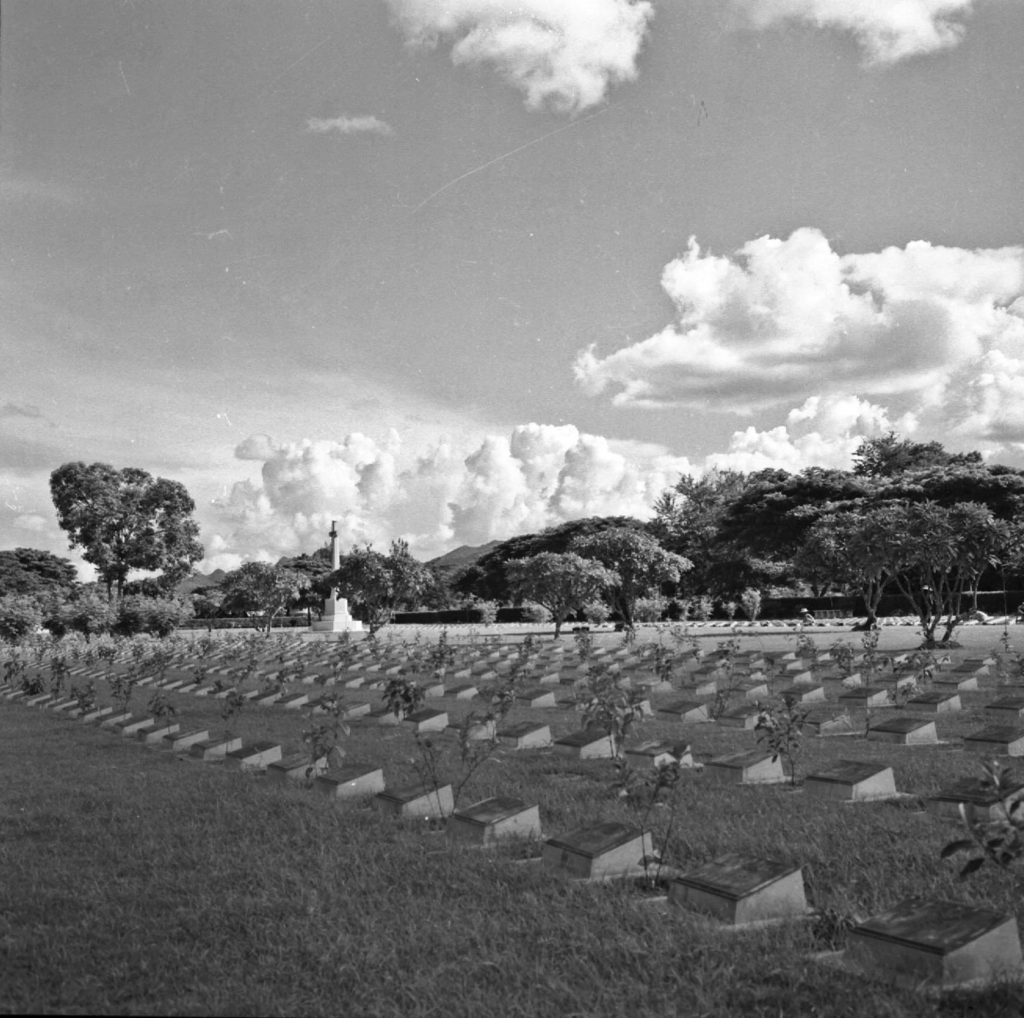
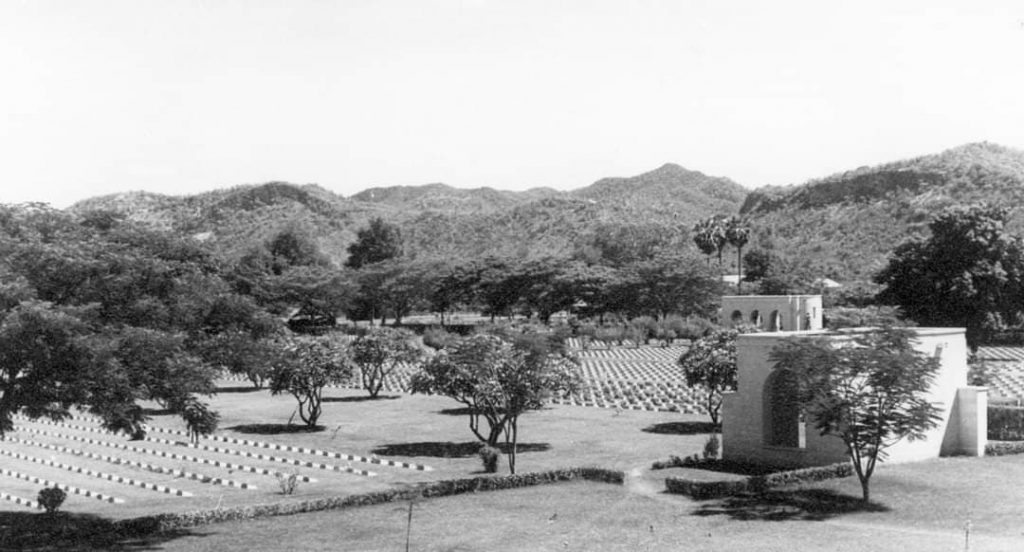
Don Rak Today:
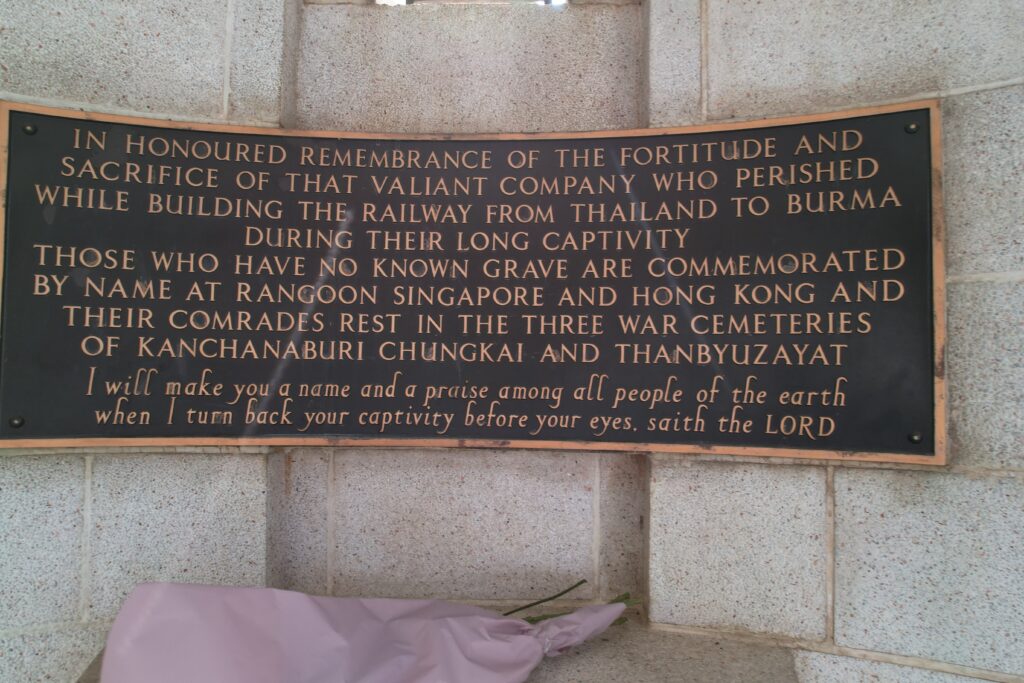
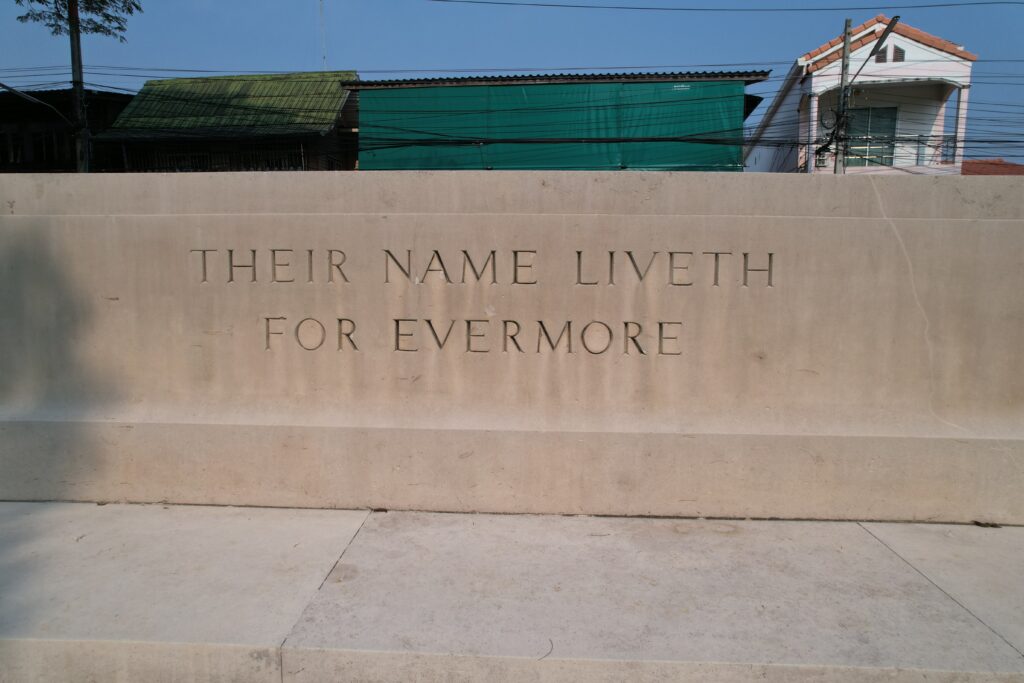
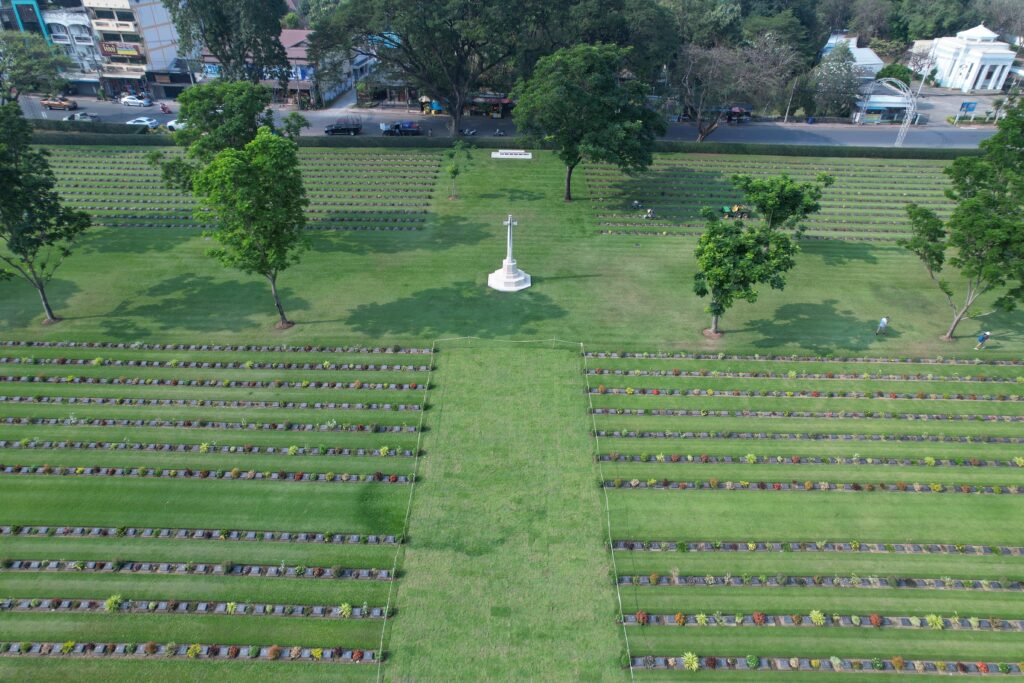
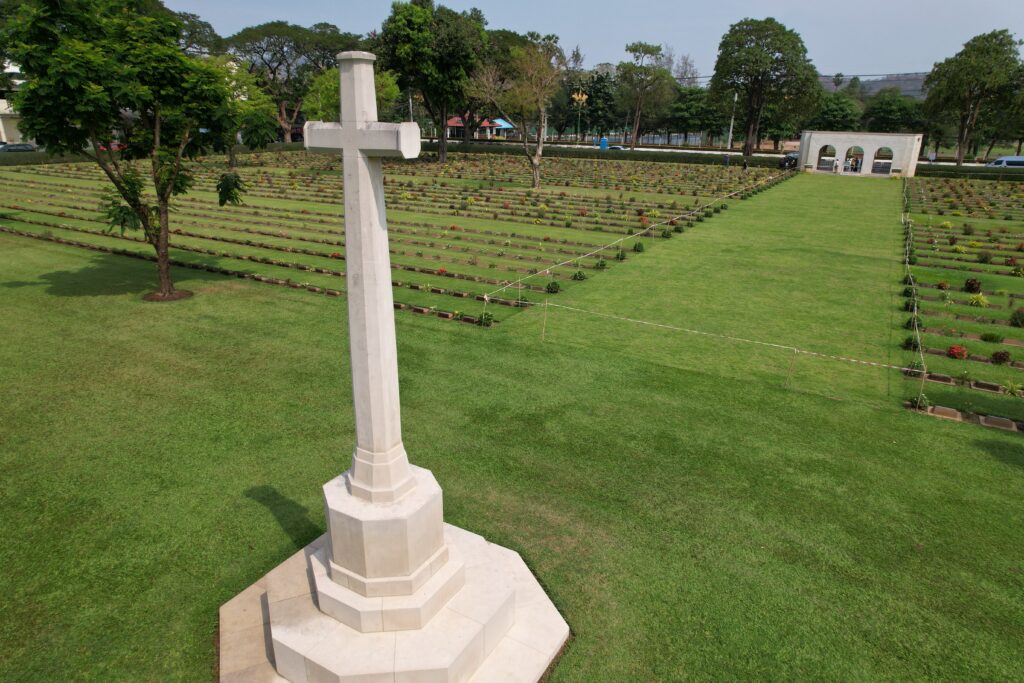
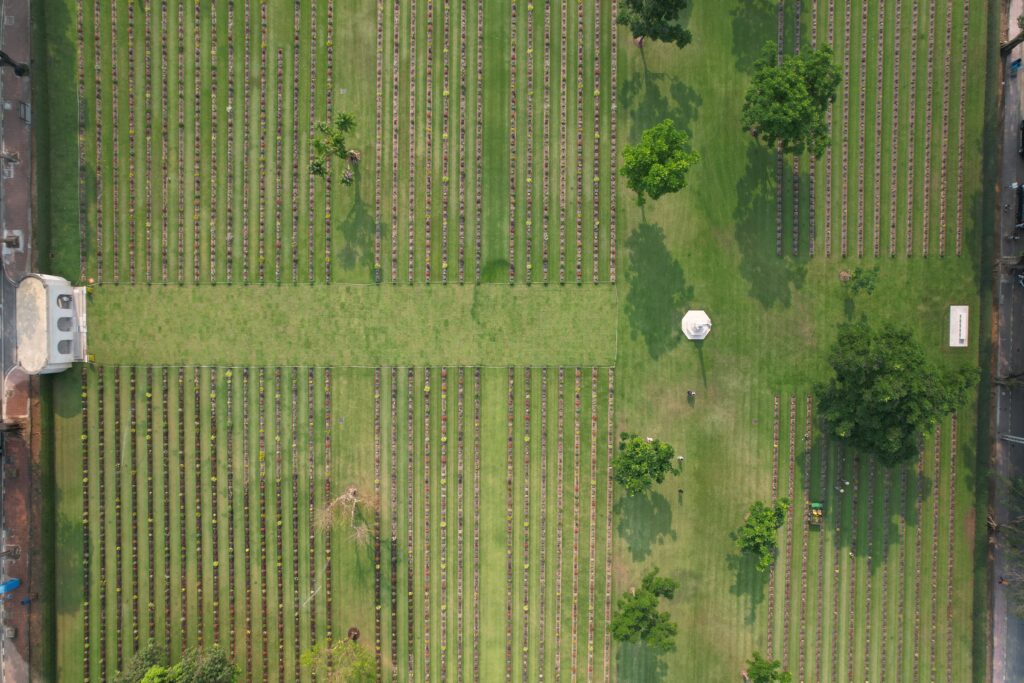

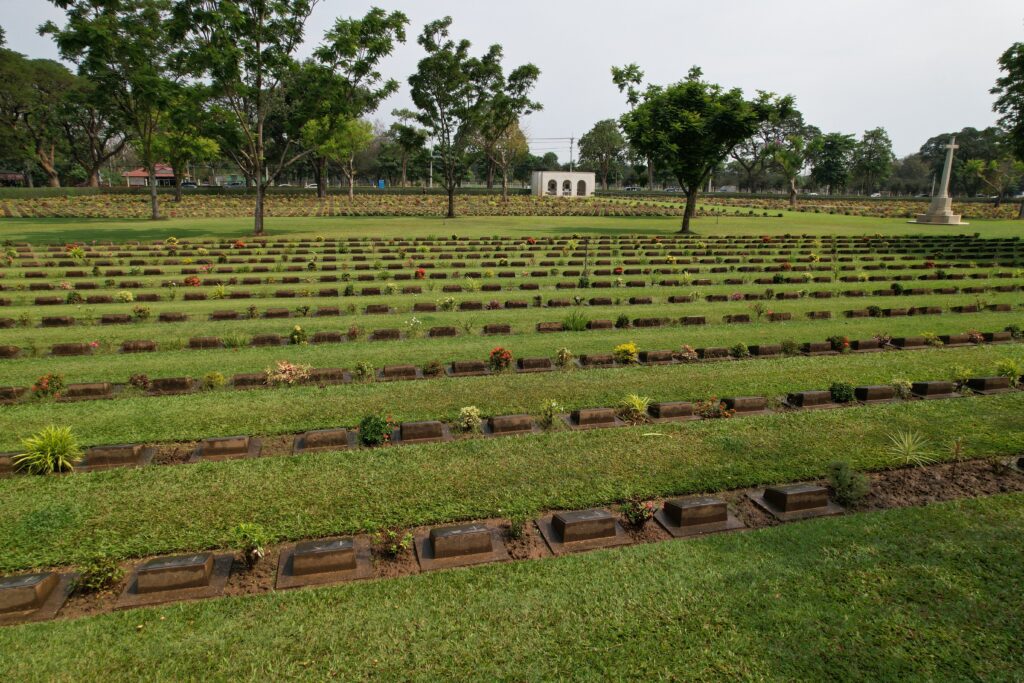
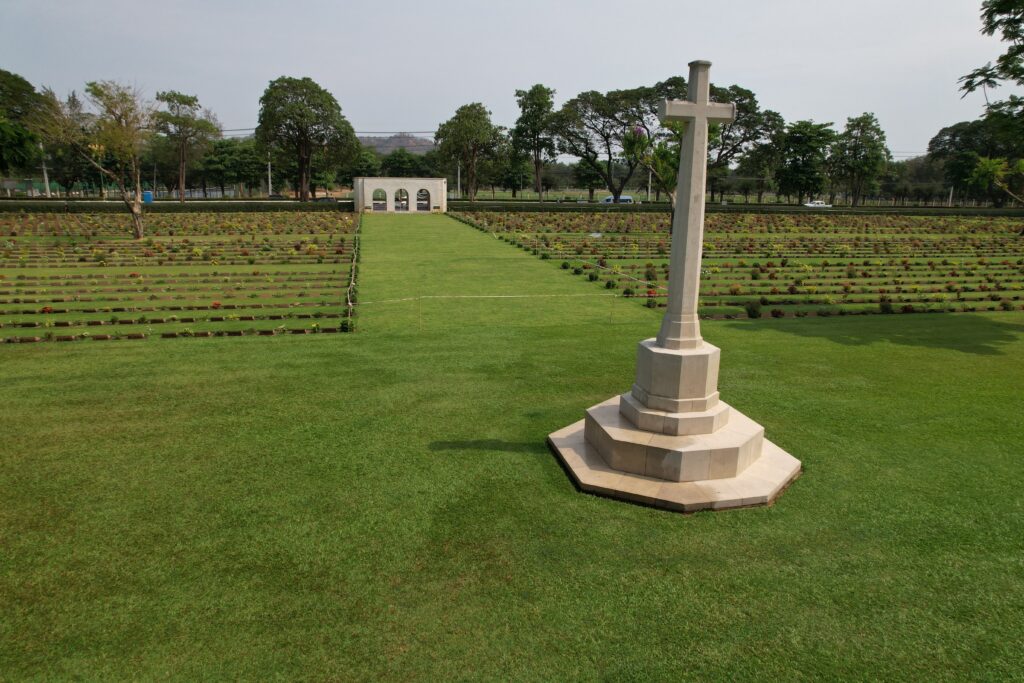
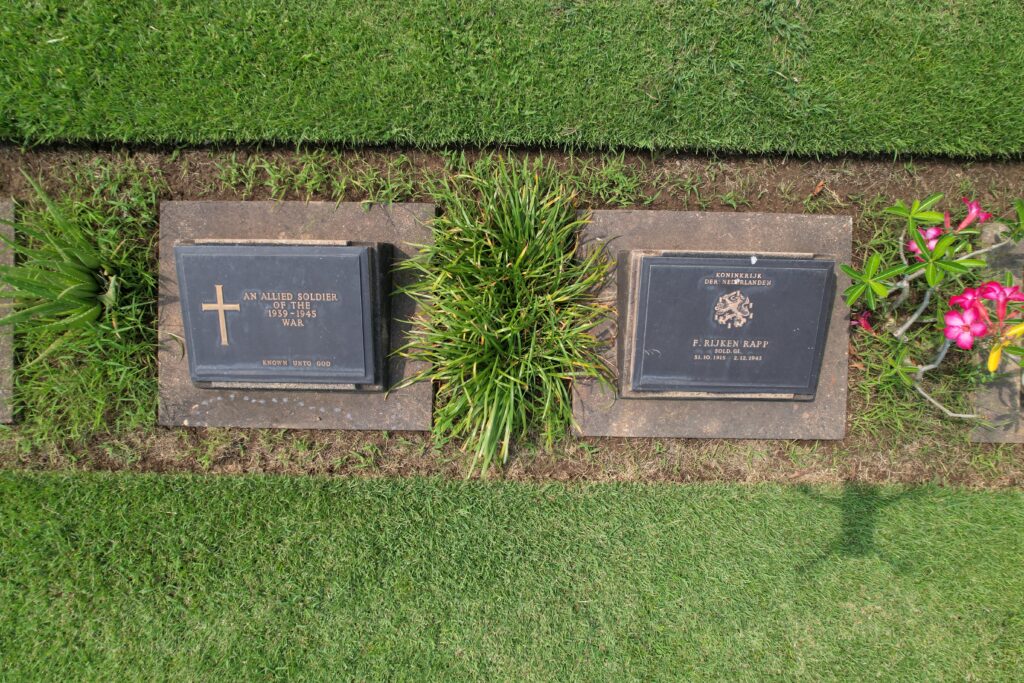
My heartfelt thanks to Dan Manners for providing these drone shots.
Chung Kai:
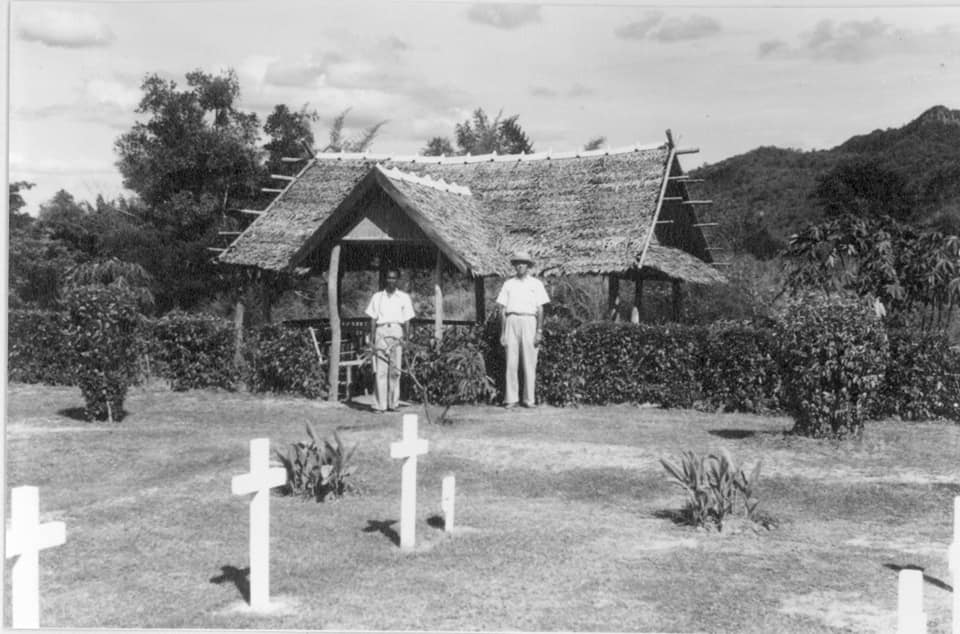
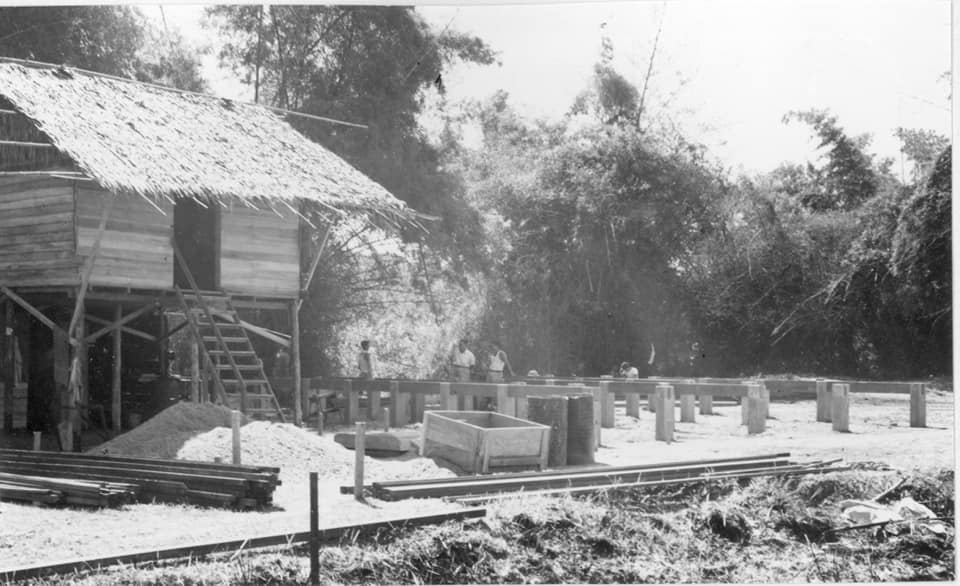
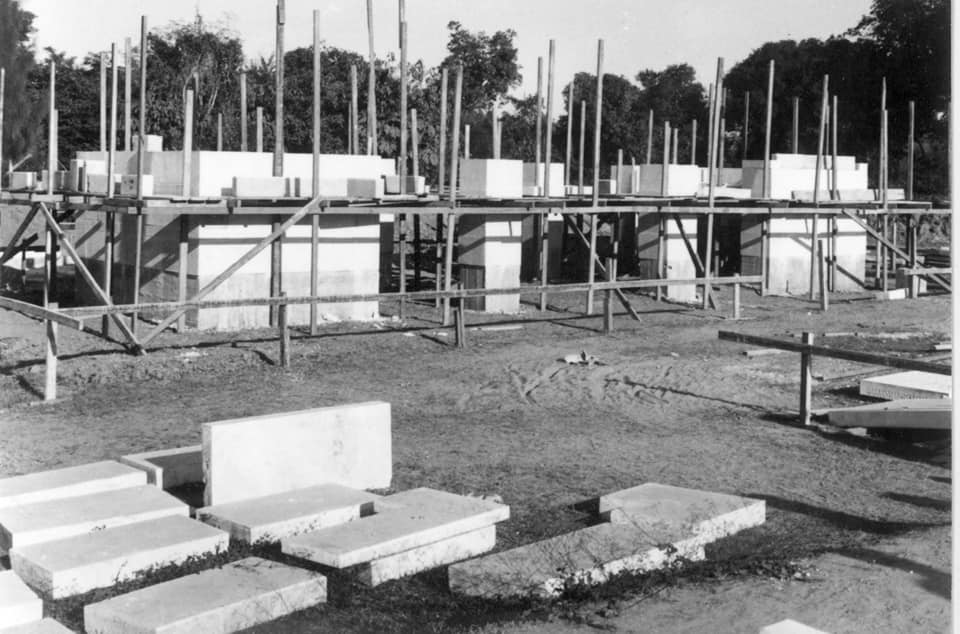
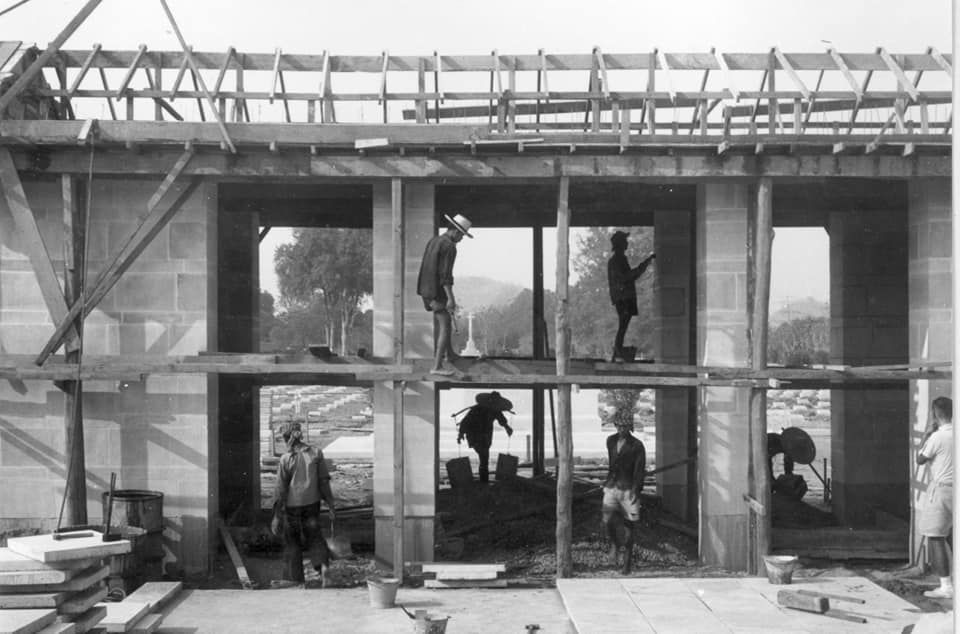
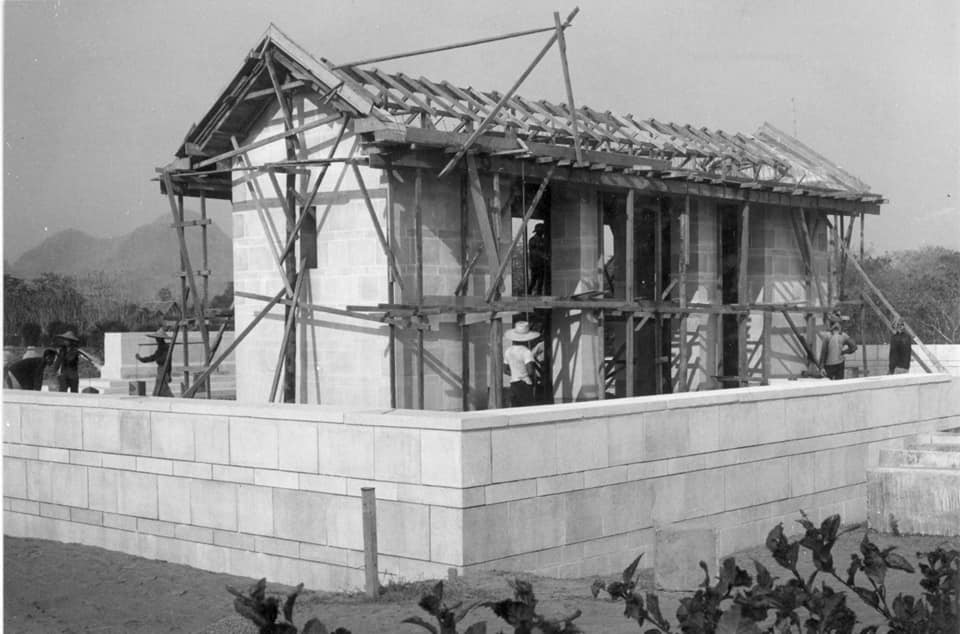
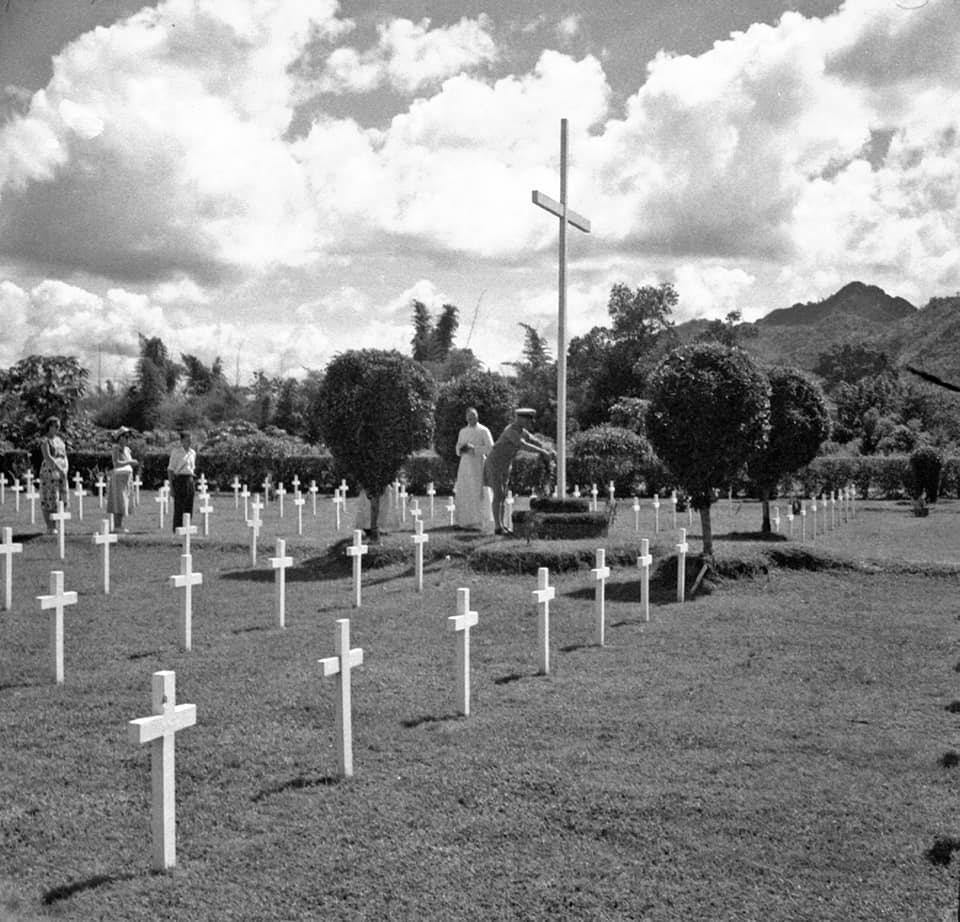
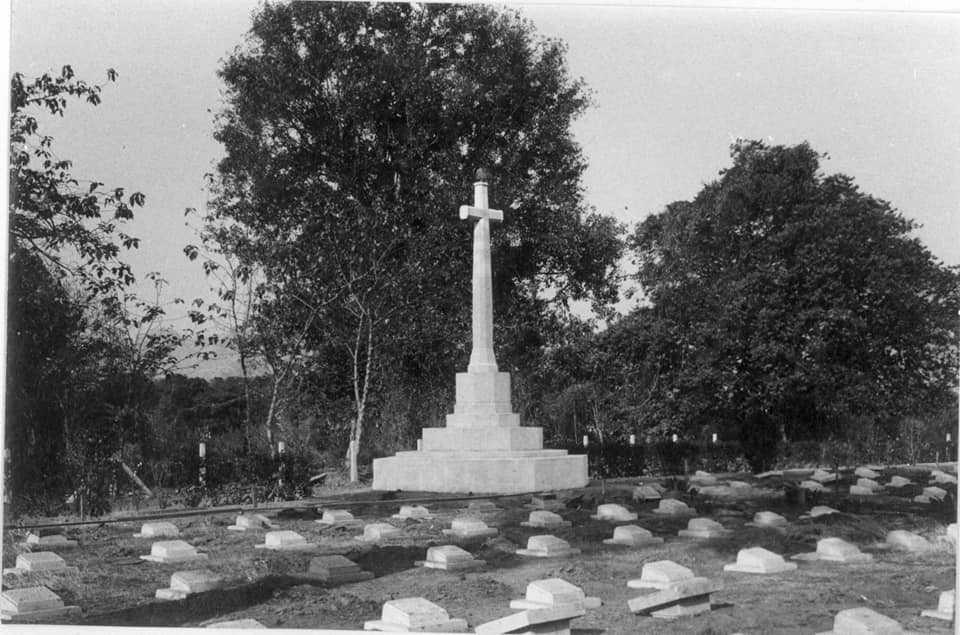
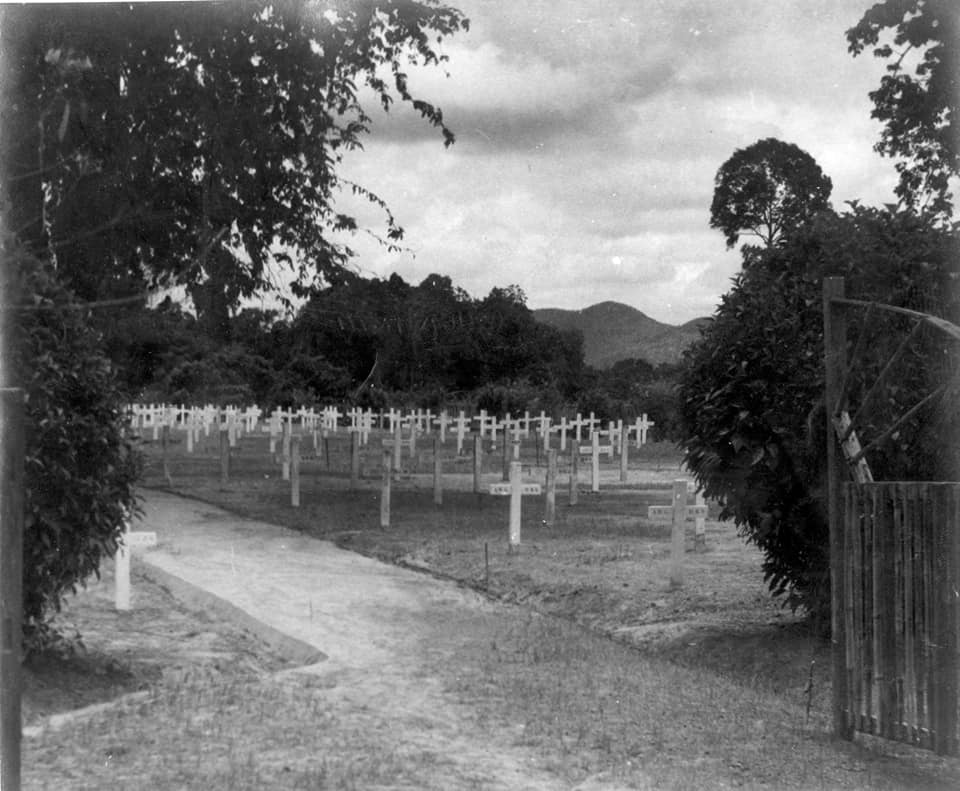
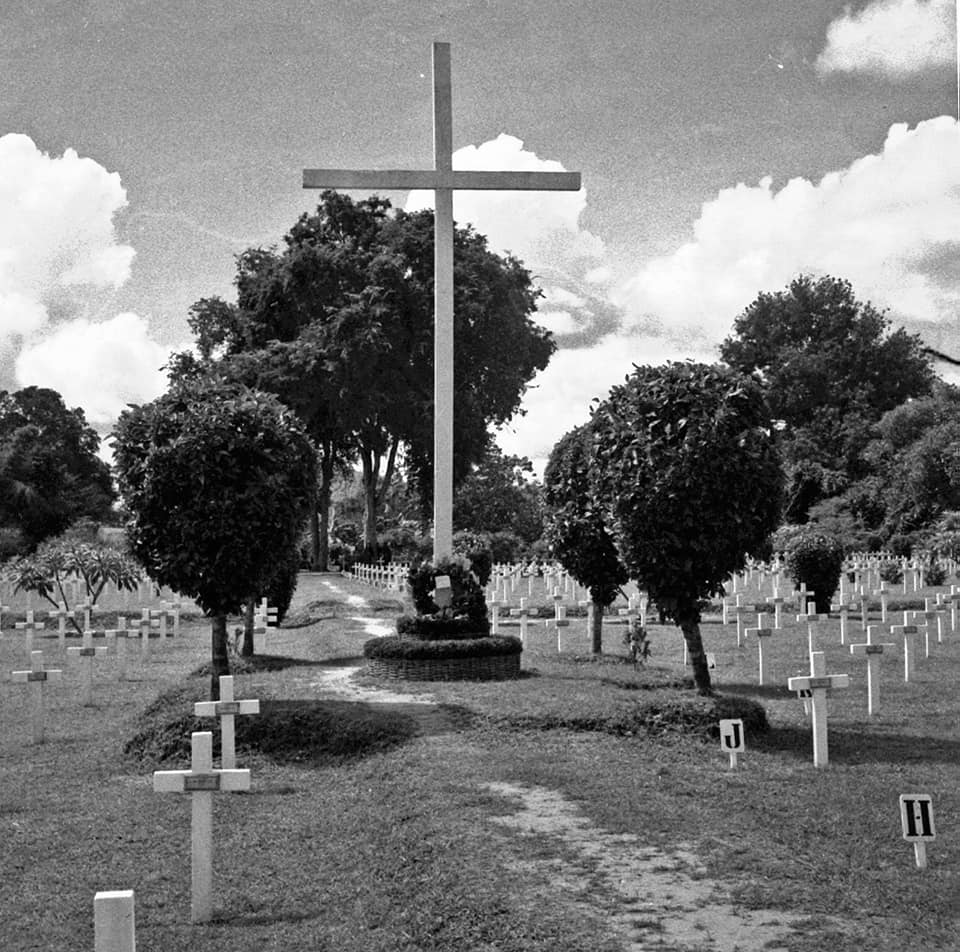
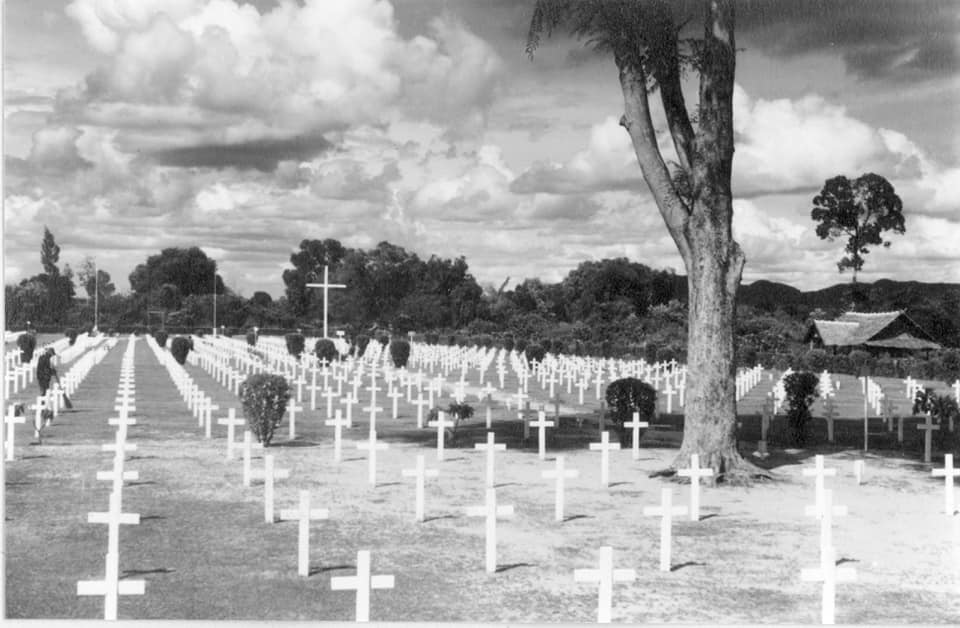
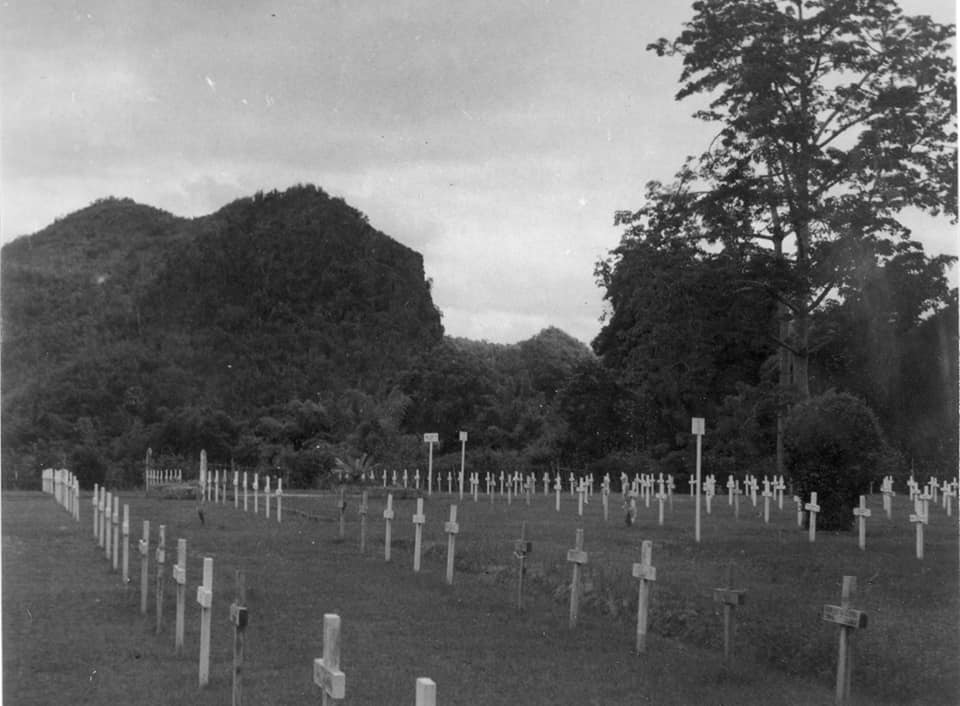
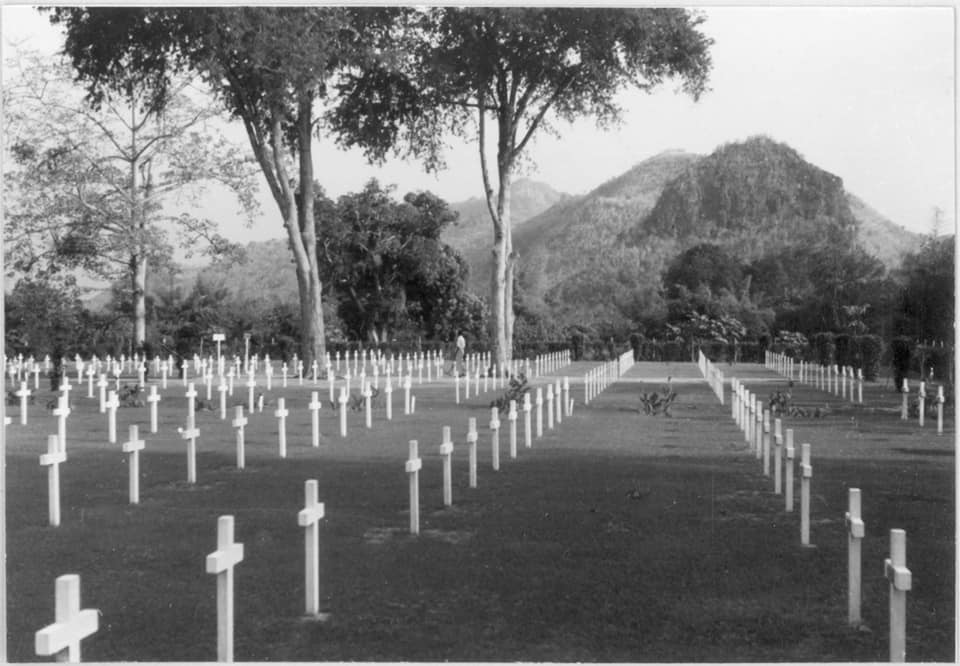
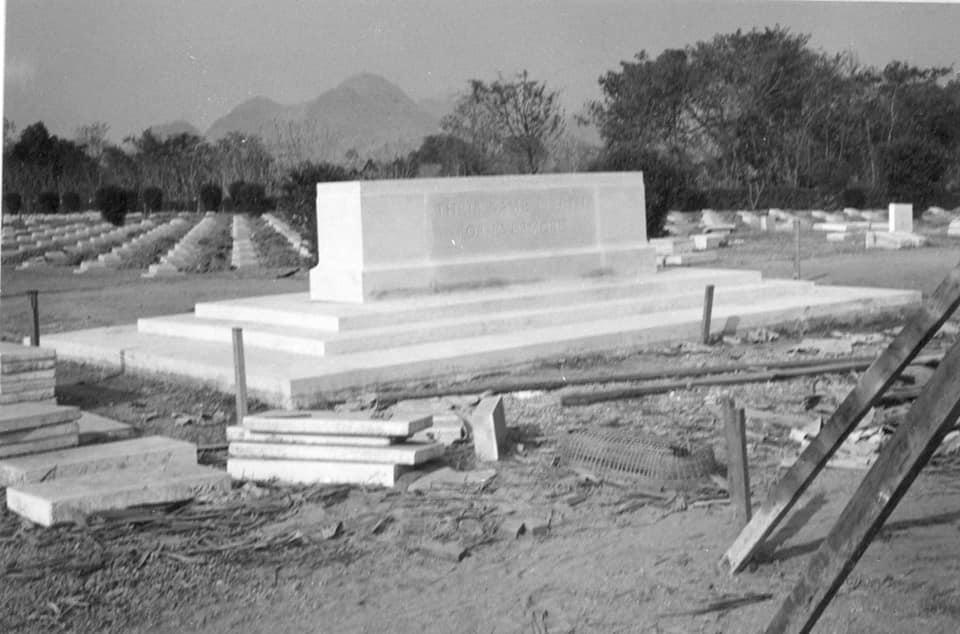
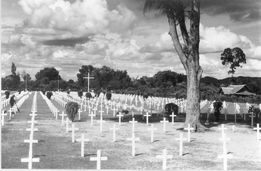
The Thanbyuzayat site (not particularly accessible due road conditions and entry visa requirements:
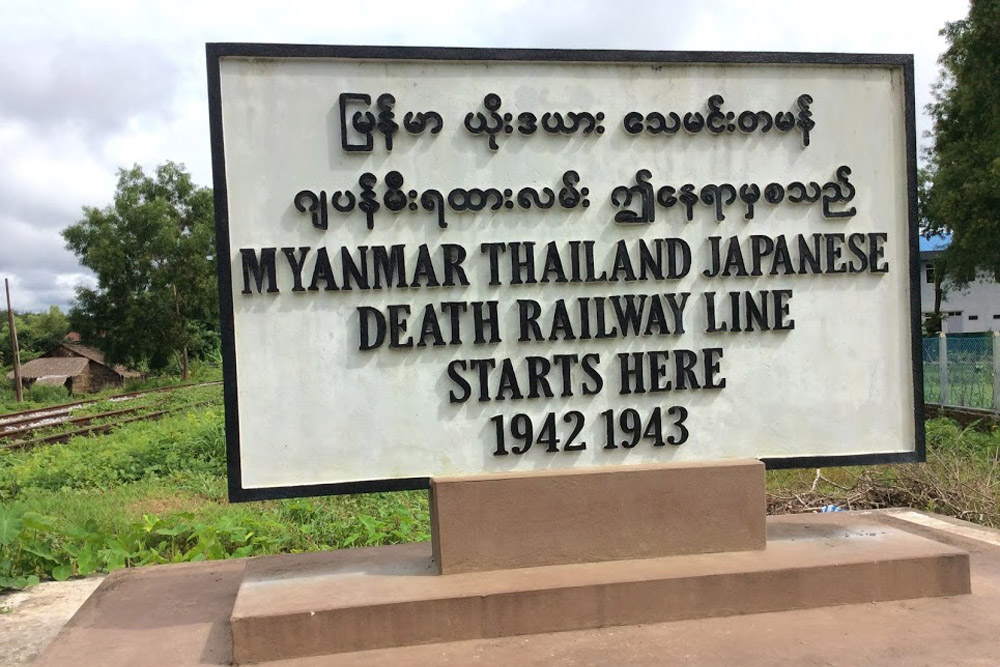

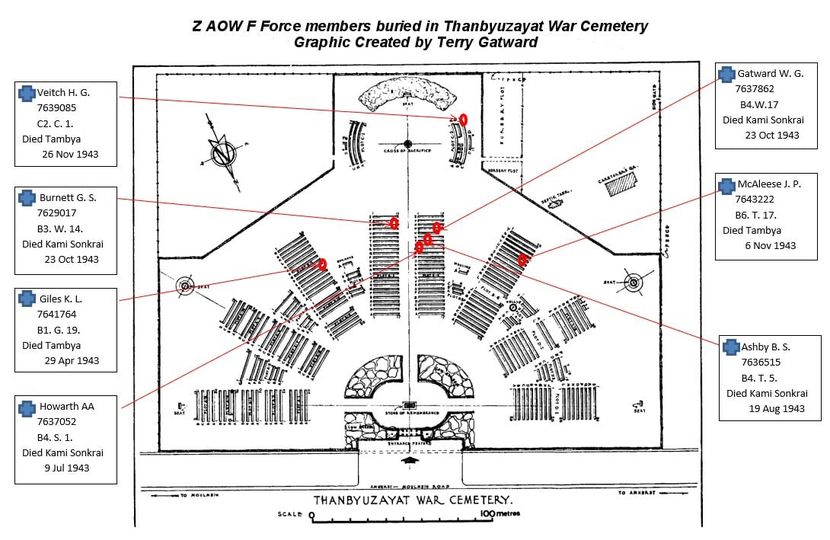
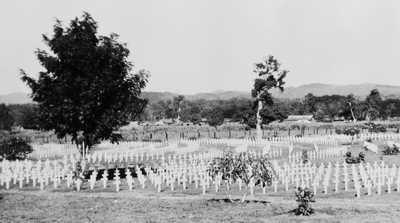
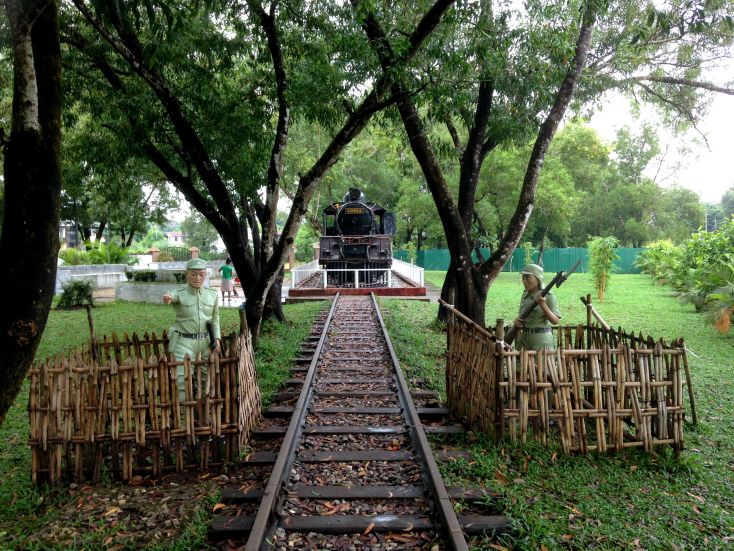
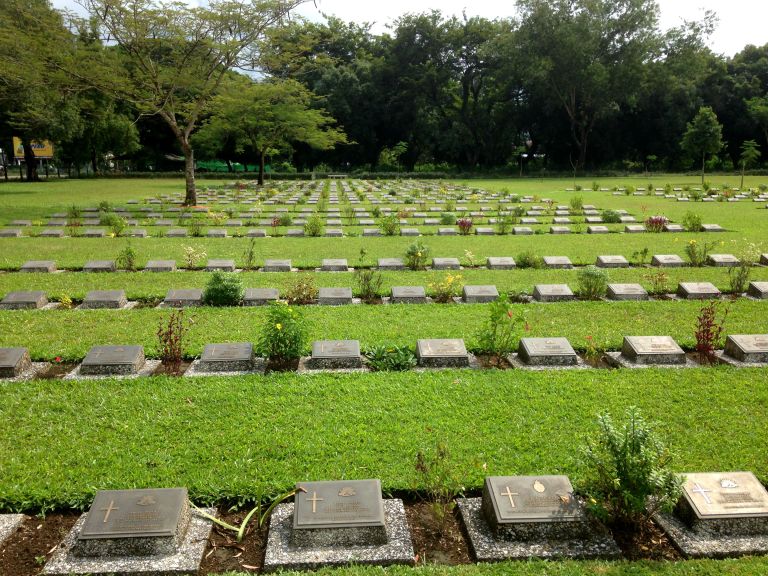
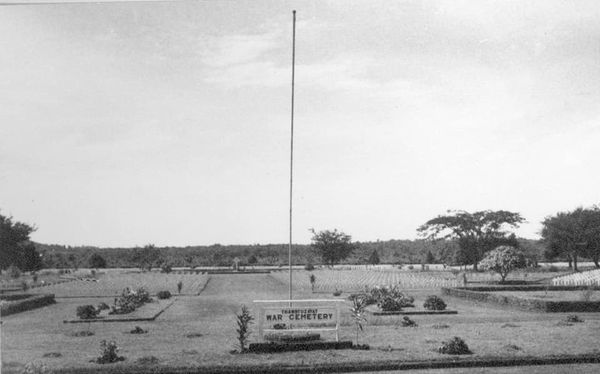
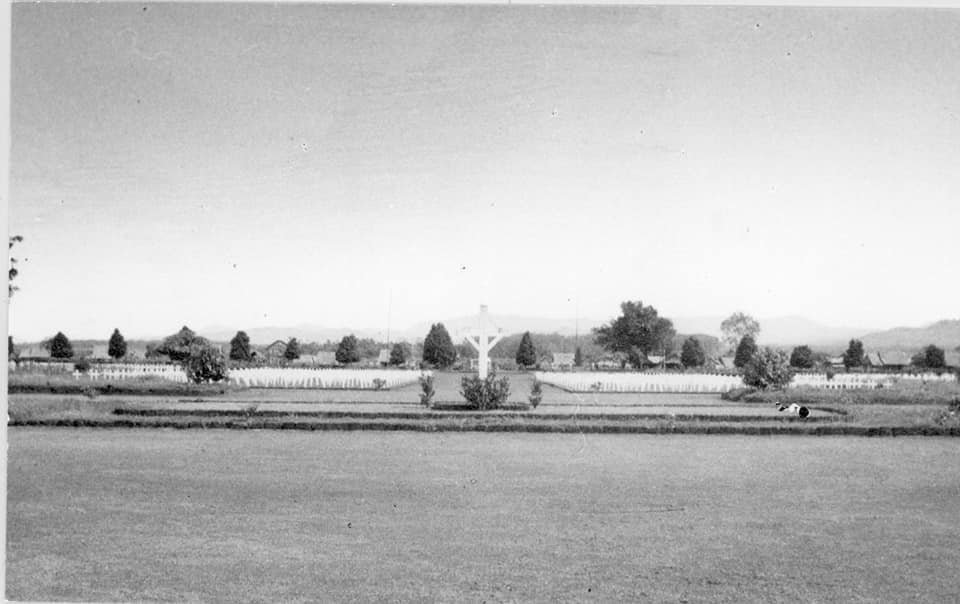
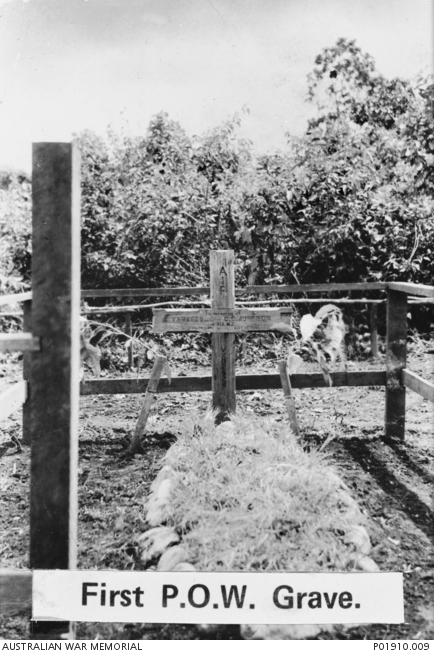
It is particularly fortunate that the US War Department decided early on not to inter the US dead on site but to repatriate them. The vast majority of the US POWs worked in Burma and those who died there would most likely have been interred in the Thanbyuzayat cemetery. Given the political situation that has developed over the ensuing years, this cemetery is generally inaccessible to visitors. By 1948, all but a few of the US remains had been turned over to family members for burial in the USA. Those remaining unclaimed were moved to the National Cemetery in Hawaii known as the Punch Bowl.
=====================
The Don Rak and Thanbuyzayat sites are collection / collation cemeteries; meaning that post-war the remains of POWs who had been buried in dozens of sites across the length and breadth of the TBR were exhumed, processed for identification purposes and re-interred at these sites. So far there are seven sites in the immediate area of Kan City alone where remains were found. ChungKai has a more involved history. It started as the first actual POW work camp. After construction in that area was complete, it was converted to a ‘hospital’ camp. Hence, many of the earliest casualties were buried there. The common myth is that those who are buried there had died there. While this is true for many, others were added post-war and, for an as yet unexplained reason, all the Australians were re-located to Don Rak.
=======================
Another slice of CWGC local history shared by the site manager Mick Newbatt:
Meet Khun SANGNIAM NUTDAMLUNG.
She started work at Don Rak cemetery in 1946 when the British Army graves registration unit started to organise the cemetery. White wooden crosses were the order of the day and a 20 year old Sangniam was tasked with painting number, rank, name and unit of the casualties on the crosses.The war in the Pacific had only ended recently and she distinctly remembers the RAF air raid in 1945 that destroyed the railway bridge. With the defeat of the Japanese there appeared a significant allied presence in Kanchanaburi including the IWGC, as it was then, and so, eventually, began her career which was to span four decades.
Post war work was very difficult, there was no mains water and it was drawn from a well by buckets. There were 32 gardeners in the team to cover both cemeteries and irrigation in the hot season was the most unpopular task. Nor were then any items such as ride on mowers, a gang mower was pulled by three members of staff. Upon retirement in the mid 1980’s she still maintained contact with the ‘youngsters’ and regularly attends our team meals. She told me she was proud to have worked for the commission and still likes to see what we are up to. She is the last surviving member of the original Kanchanaburi team.
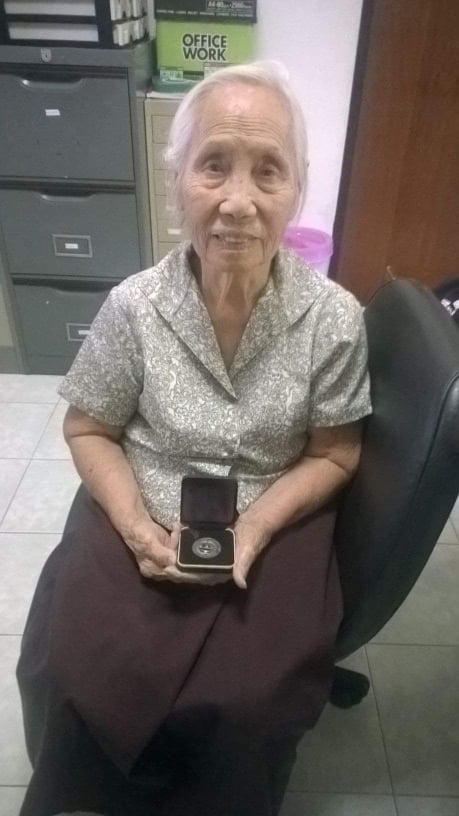
Photo: Khun Sangniam displays her CWGC award for loyal and devoted service.
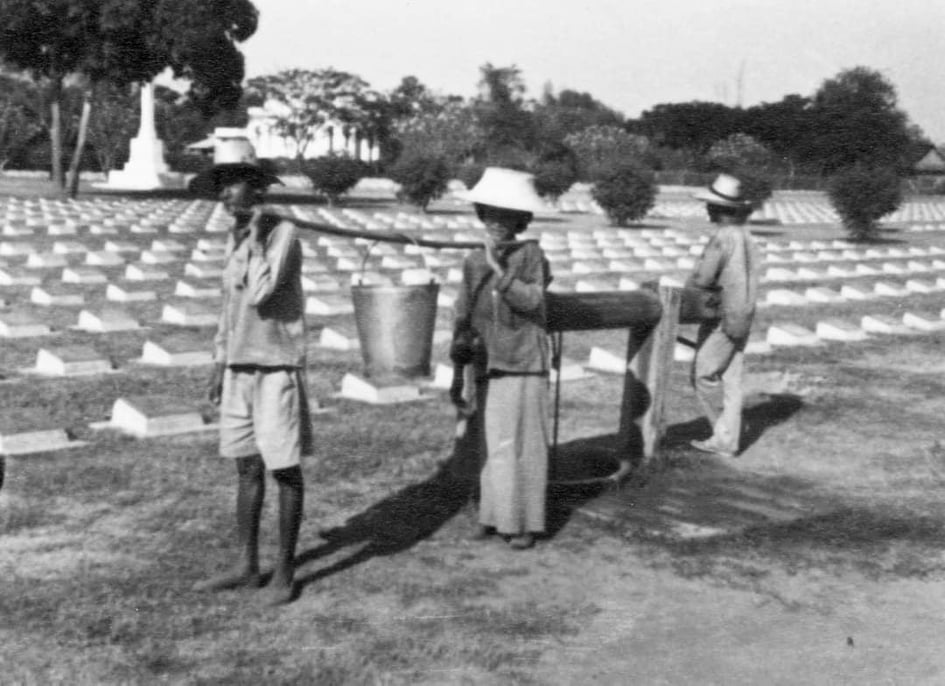
Some shots of visiting the ChungKai cem before the nearby roadway bridge was built in the 1950s:
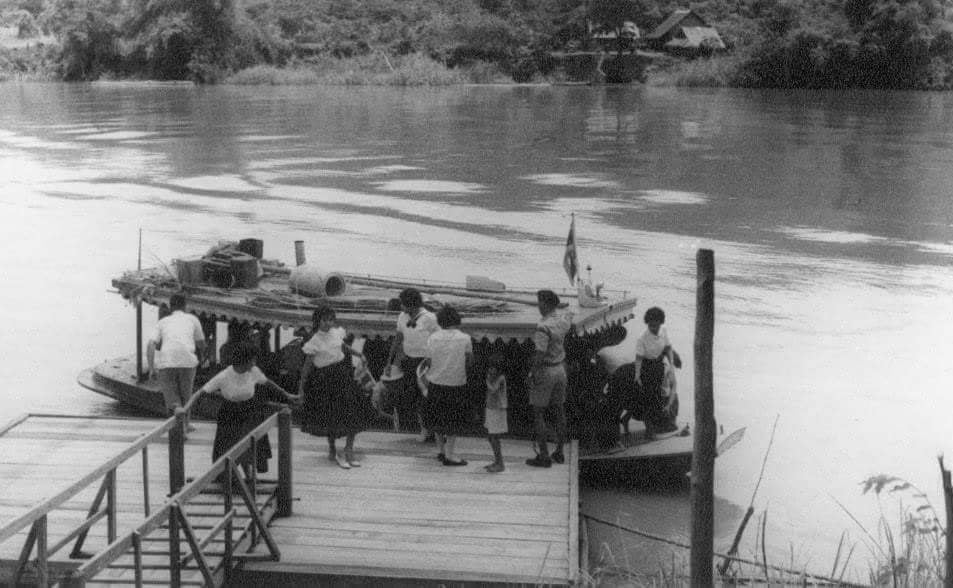
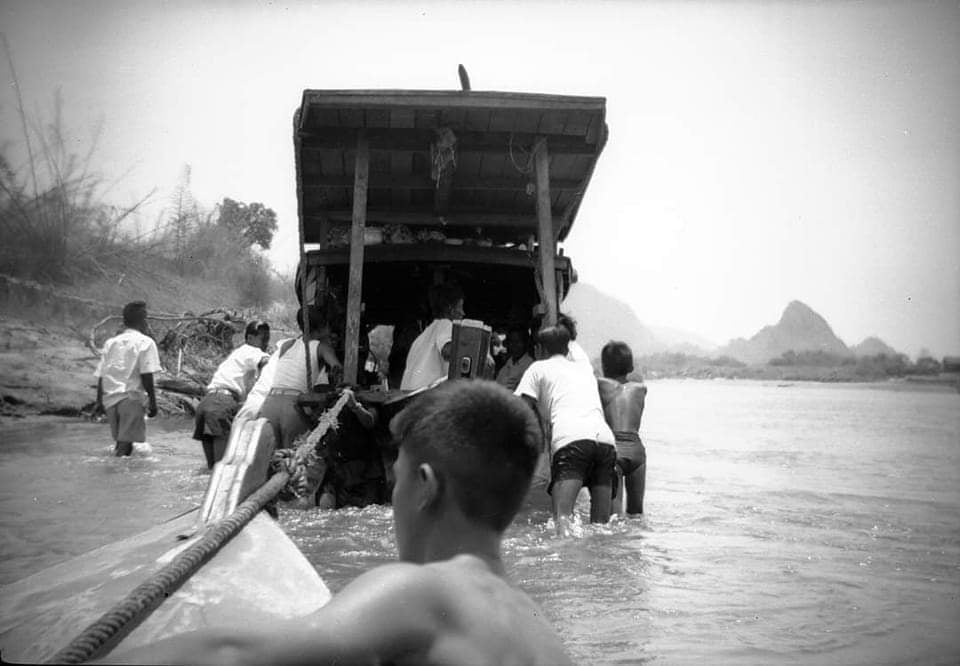

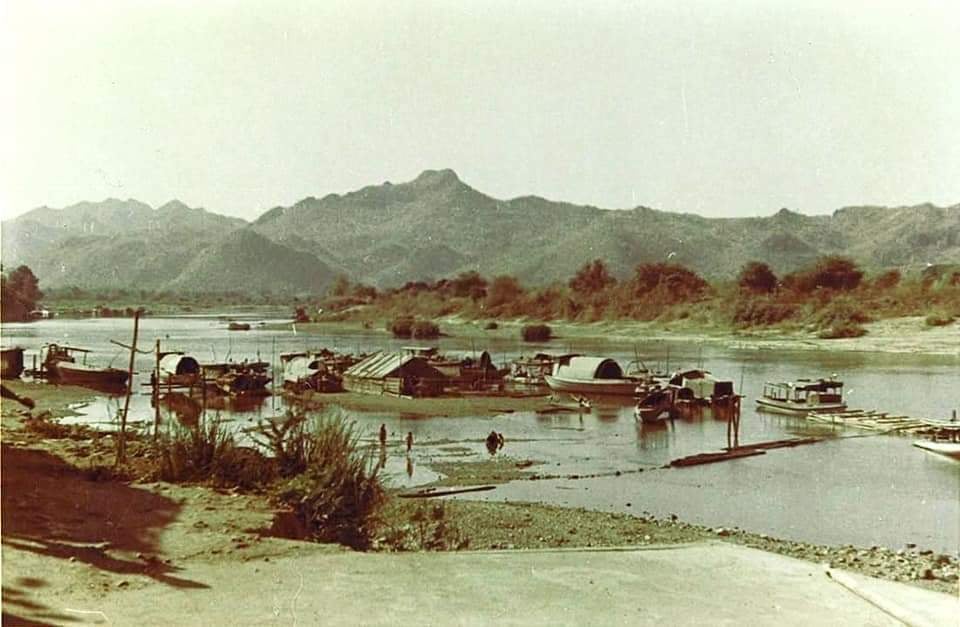
In historical parlance, these are known as WITNESS TREES. They pre-date the event and serve as landmarks of events that transpired.
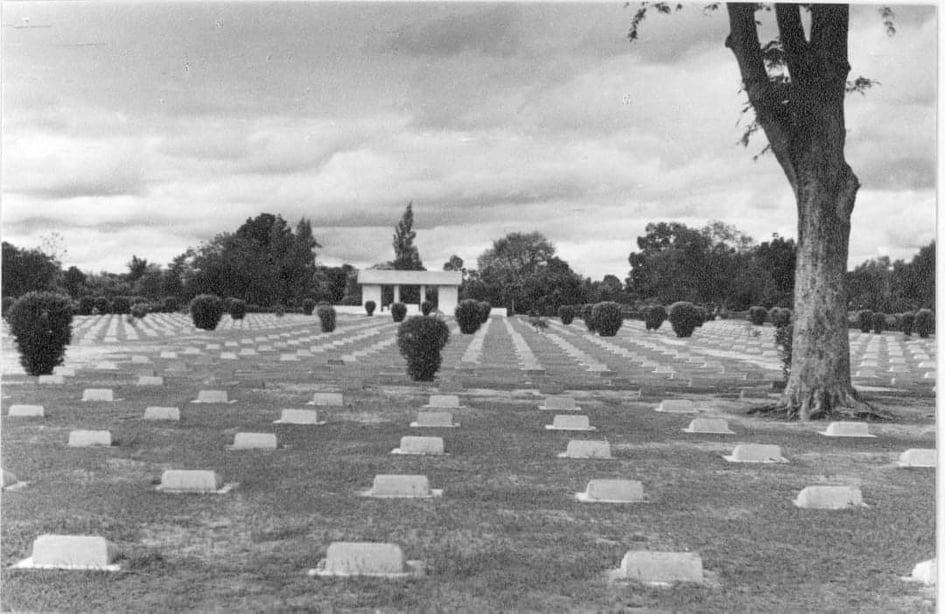
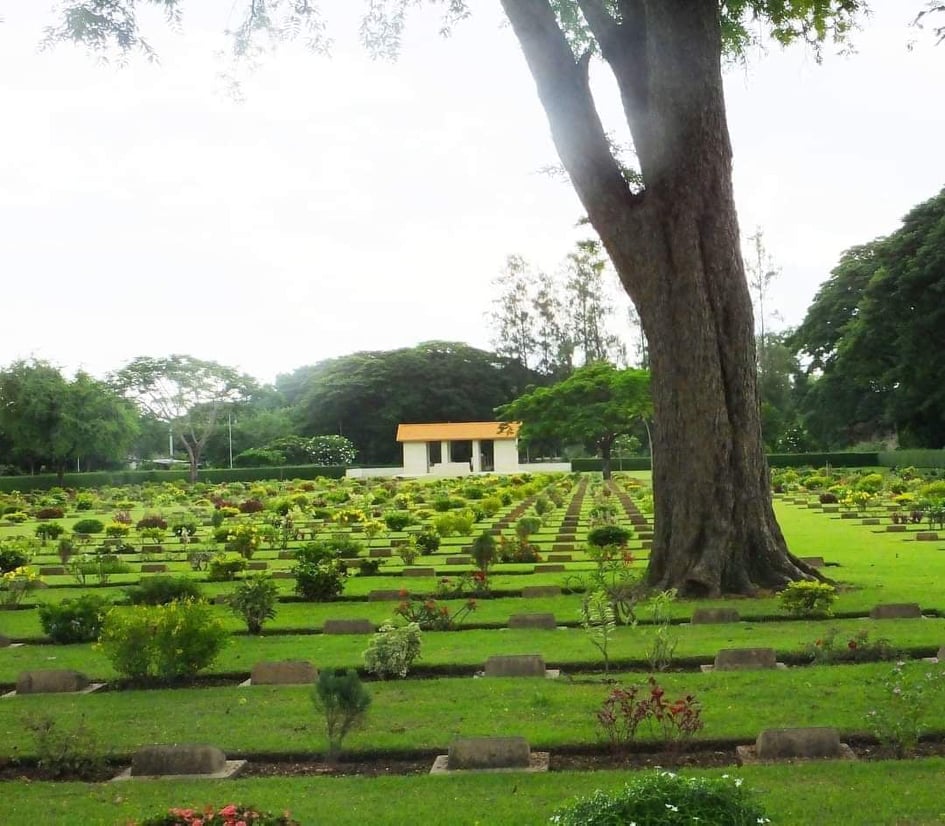
LTC Tharp recorded in his POW diary (only a portion of which survived) that post-liberation he dispatched a team to retrieve a satchel containing records he had secreted from the captors and had buried near a tree at ChungKai as the US group was moved from there to the Thamarkam camp.
I wonder IF this is THAT tree?
2021 drone pix of Don Rak:
